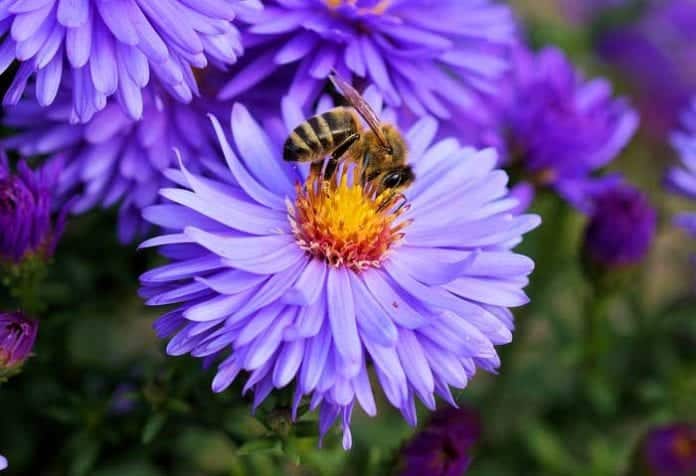
Purple Flowers: Flowers come in a wide variety of colors. For instance, many of these colors bear huge symbolism and meanings. In particular red flowers symbolize love, yellow ones symbolize joy, white blossoms mean purity and purple ones indicate nobility and elegance.Believe it or not, purple is one of the most common flower colors.
About this, it is essential to note that the purple color of flowers and other purple plant organs (like purple leaves and stems) is due to the pigment called anthocyanin.
Aside from purple, anthocyanin also produces red, magenta, and blue colors, depending on its intensity.This page has compiled 50+ of the planet’s most beautiful purple flowers.
So let’s not make the introduction any longer. Welcome to the beautiful world of purple flowers!
Table of Contents
- Top Purple Flowers
- 1. Verbena (Verbena bonariensis)
- 2. Delphinium (Delphinium sp.)
- 3. Pasque flower (Pulsatilla vulgaris)
- 4. Lilac (Syringa vulgaris)
- 5. Clematis (Clematis sp.)
- 6. Salvia (Salvia sp.)
- 7. Purple Freesia (Freesia sp.)
- 8. Catmint (Nepeta sp.)
- 9. Dwarf Iris (Iris sibirica ‘Dwarf Varieties’)
- 10. Lavender (Lavandula spica)
- 11. Balloon flower (Platycodon grandiflorus)
- 12. Lisianthus (Eustoma grandiflorum)
- 13. Lily of the Nile (Agapanthus africanus)
- 14. Morning glory (Ipomoea purpurea)
- 15. Bittersweet nightshade (Solanum dulcamara)
- 16. Wild Indigo (Baptisia australis)
- 17. Monkshood (Aconitum variegatum)
- 18. China Aster (Callistephus chinensis)
- 19. Hydrangea (Hydrangea macrophylla)
- 20. Cosmos (Cosmos bipinnatus)
- 21. Cattleya Orchid (Cattleya labiata)
- 22. Candytuft (Iberis sempervirens)
- 23. Fuchsia (Fuchsia sp.)
- 24. Foxglove (Digitalis purpurea)
- 25. Liatris (Liatris spicata)
- More Purple/Indigo Flowers
- Acanthus
- Achillea
- Adder’s Tongue
- African Flame Lily
- Ageratum
- Alfalfa
- Amaryllis
- Ammi majus
- Amur Adonis
- Anemone
- Angelonia
- Aromatic Aster
- Artemisia
- Artichoke thistle
- Astilbes
- August Lily
- Azalea
- Basil
- Basket-of-Gold
- Bergénia
- Bighead Knapweed
- Billy Button
- Bindweed
- Bleeding Heart
- Blood Root
- Blood-Red Iris
- Bluebell Flower
- Browallia
- Bryony
- Buckbean
- Bugleweed
- Bugloss
- Bupleurum
- Canaigre Dock
- Candytuft
- Cardinal
- Carex
- Carnation
- Casa Blanca
- Caspia
- Castor Bean
- Chinese Peony
- Chives
- Coltsfoot
- Columbine
- Comfrey
- Common Peony
- Convallaria
- Coral bells
- Cosmos
- Creeping Lettuce
- Crocus
- Cyclamen
- Cyperus
- Daffodil
- Daisy
- Daylily
- Dead Nettle
- Dianthus
- Diascia
- Dittany of Crete
- Dock
- Dogwood
- Dragon’s Tongue
- Dutchman’s Breeches
- Edelweiss
- Edulis Tulip
- Elastic Momordica
- Enchanter’s Nightshade
- Epimedium
- Eupatorium
- Everlasting
- False Bird of Paradise
- False Spirea
- Fennel
- Fernleaf Yarrow
- Feverfew
- Field Wood-rush
- Fig Marigold
- Flamingo
- Flowering Fern
- Flowering Reed
- Forget-Me-Not
- Fountain Grass
- Four O’clock
- Foxtail Fern
- Gaillardia
- Galax
- Gas Plant
- Gaura
- Gazania
- Genista
- Geranium
- Gerbera
- Geum
- Gilliflower
- Ginger
- Globe Thistle
- Globeflower
- Glory-of-the-Snow
- Goat’s Beard
- Goat’s rue
- Hardy Geranium
- Helenium
- Heliotrope
- Hellebore
- Hepatica
- Hibiscus Varieties
- Hollowroot
- Honesty
- Hypericum Berry
- Iberis amara
- Ice plant
- Impatiens
- Indian cane
- Indian cress
- Iris
- Ivy
- Jack-in-the-Pulpit
- Japanese Canopy
- Japanese Chrysanthemum
- Japanese Honeysuckle
- Japanese Iris
- Jupiter’s Beard
- Kaffir Lily
- Kalanchoe
- Kennedia
- Lace Fern
- Leadwort
- Lemon Balm
- Lily
- Little Larkspur
- Lobelia
- Loosestrife
- Lupine
- Madder
- Mandrake
- Marguerite Daisy
- Marjoram
- Marsh Gladiolus
- Marshmallow
- Mazus
- Meadowsweet
- Milkwort
- Ming fern
- Mistletoe
- Misty Blue Limonium
- Montbretia
- Monte Cassino
- Moonflower
- Mother-in-law Tongue
- Motherwort
- Mugwort
- Nemesia
- Nerine
- Nettle
- Nicotiana
- Nierembergia
- Old-Man’s Beard
- Ornithogalum
- Osteospermum
- Painted Tongue
- Paper Reed
- Peony
- Peperomia
- Peppermint
- Perennial Flax
- Pheasant’s eye
- Phlox
- Pink Musk
- Polemonium
- Polianthes tuberosa
- Prickly pear
- Prickly Water Lily
- Primrose
- Queens Cup
- Ranunculus
- Rattlesnake
- Red Cranesbill
- Red Rover
- Restharrow
- Rock Soapwort
- Rose
- Royal Bluebell
- Scabiosis
- Scille
- Sea Thrift
- Shasta Daisy
- Silverweed
- Skunk Cabbage
- Snow in Summer
- Solidago
- Solomon’s Seal
- Speedwell
- Spider Lily
- Spring Beauty
- Squirrel Corn
- Starwort
- Succory
- Sweet Woodruff
- Tansy
- Throatwort
- Tiger Lily
- Toad Lily
- Trientalis
- Turpentine Broom
- White Trillium
- Wild Narcissus
- Wisteria
- Frequently Asked Questions
- What makes sweet peas a favorite among purple flowers?
- How do I care for a lily of the Nile bush?
- Can you name some types of purple annual flowers?
- What makes the balloon flower a distinct type of purple flower?
- What are the characteristics of a butterfly bush?
- Why are passion flowers popular among purple flowers?
- Can you discuss more about the purple flower known as “purple flash“?
- What perennial purple bushes are suitable for planting?
- How can purple flowers brighten up a rock garden?
- What purple flowers are suitable for planting in a large flower bush?
Top Purple Flowers
There are the best types of purple flowers in the plant world:
1. Verbena (Verbena bonariensis)
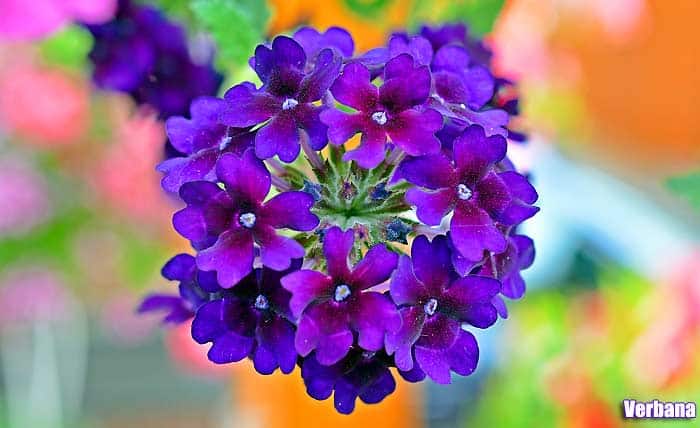
| Kingdom | Order | Family | Genus | Species |
|---|---|---|---|---|
| Plantae | Lamiales | Verbenaceae | Verbena | Verbena bonariensis |
Also known as the Purpletop Vervain, the Verbena (Verbena bonariensis)[1] is characterized by having a small purple five-petaled flowering plant.
- Aside from its aesthetic value, Verbena has long been used in folk plant medicine, usually herbal tea. The Verbena has a galactagogue effect (can trigger and promote lactation in women) and even act as a sex steroid.
- New hybrid species of Verbena can already thrive even in the hottest summer season. However, Verbena is very sensitive to cold weather and can be easily damaged by winter frosts.
- These small purple flowers are native to South America.
- Verbena bonariensis is highly valued for its ability to attract butterflies and other pollinators. Its tall, slender stems topped with clusters of small purple flowers make it an ideal plant for adding height to garden borders while supporting local wildlife.
- While generally robust, Verbena bonariensis can be susceptible to powdery mildew, especially when grown in shaded conditions that reduce air circulation around the plants.
Zone Information:
Verbena bonariensis thrives in USDA Hardiness Zones 7 through 11. It prefers full sun but can tolerate partial shade, especially in hotter climates. This plant is well-adapted to a variety of soil types, provided they are well-drained.
Suggested Reading:
Lantana
Flower Type: Perennials![]()
2. Delphinium (Delphinium sp.)
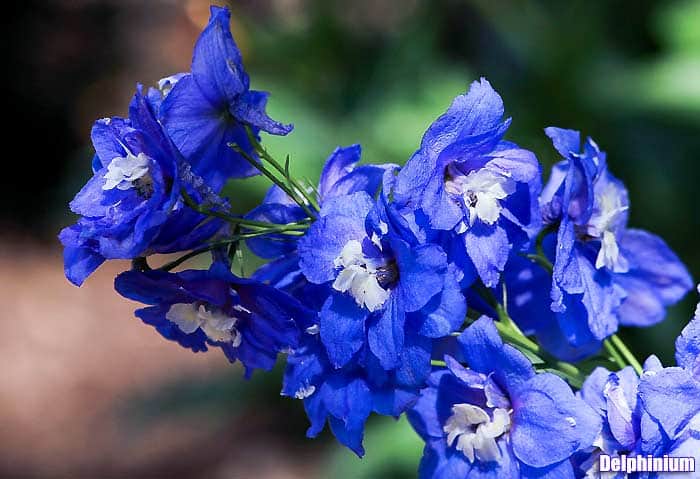
| Kingdom | Order | Family | Genus | Species |
|---|---|---|---|---|
| Plantae | Ranunculales | Ranunculaceae | Delphinium | Delphinium sp. |
This purple flower is found thriving in relatively cold to moist environments; Delphiniums [2] are perennial plants with spike flowers that can vary from purple, blue, white, and yellow flowers. This type of purple flower, also called the “larkspur” is characterized by having dark green but glossy leaves.
- The size of a Delphinium plant can range from 2 feet up to 6 feet.
- The name “Delphinium” comes from the Latin word meaning “dolphin“, which refers to the shape of the nectar-secreting part of its flower.
- Despite being attractive to look at, all parts of the Delphinium (all species) are highly toxic to humans and other animals.
- Delphiniums are especially attractive to butterflies and hummingbirds, making them excellent plants for pollinator gardens. Their tall spires of vibrant flowers provide nectar throughout the growing season.
- Delphinium species exhibit a wide range of ecological adaptability, which allows them to thrive in varied climates and conditions, from moist meadows to dry steppe environments. This adaptability is reflected in their diverse morphological and physiological traits.
Zone Information:
Delphiniums are hardy in USDA Hardiness Zones 3 through 8. They thrive in regions that offer cool, moist summers and relatively mild winters. Delphiniums prefer full sun to light shade and require well-drained soil. They do best with protection from strong winds and heavy rainfalls, which can damage their tall stalks and large blooms.
Suggested Reading:
Delphinium
Flower Type: Perennials![]()
3. Pasque flower (Pulsatilla vulgaris)
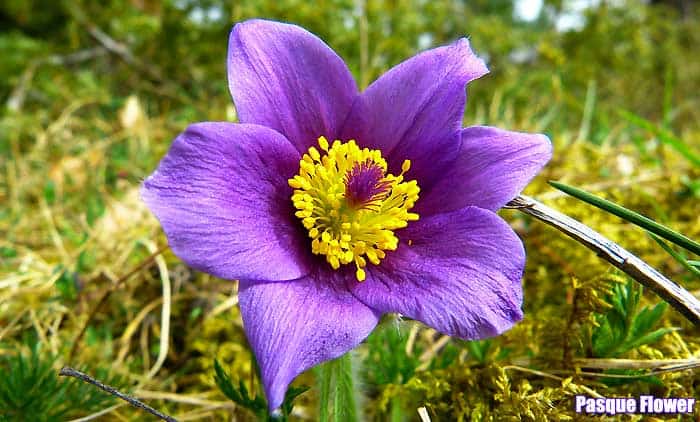
| Kingdom | Order | Family | Genus | Species |
|---|---|---|---|---|
| Plantae | Ranunculales | Ranunculaceae | Pulsatilla | Pulsatilla vulgaris |
Found in the regions with tundra biomes, the Pasque flower[3]grows low in the ground and has fine silky hairs to insulate itself and keep out of the cold environment.
- Characterized by having dark purple to almost white petals, yellow stamens at the center of the flower, and the rest of the plant being covered in silky hairs, this plant only grows in a southward direction where it faces the slopes.
- This flower is a member of the plant family Ranunculaceae (from Ranunculus meaning “little frog“), and it is assumed that members of this family thrive in places where frogs can be found.
- These dark purple flowers are endemic and are seen almost anywhere in the northwest United States and Northern Alaska. It is the state flower of South Dakota.
- Pulsatilla vulgaris has been used in traditional medicine for its sedative and analgesic properties. The plant contains anemonin, which is effective in treating various ailments such as headaches and nervous disorders.
- Pasque Flower is considered rare and is protected in several parts of Europe. Its habitats, typically calcareous grasslands, are declining, making conservation efforts critical.
- Despite its beauty, the Pasque Flower is adapted to attract early-spring pollinators, including bees and butterflies. Its flowers open fully only when the sun shines, maximizing the chances of being visited by pollinators during the brief early spring period.
Zone Information:
Pasque Flower is hardy in USDA Hardiness Zones 4 through 8. It prefers a sunny location with well-drained, alkaline soil and can thrive in rocky or sandy soil conditions. It is also suitable for cultivation in rock gardens or alpine houses due to its low-growing habit and preference for cool conditions.
Suggested Reading:
Pasque flower
Flower Type: Perennials![]()
4. Lilac (Syringa vulgaris)
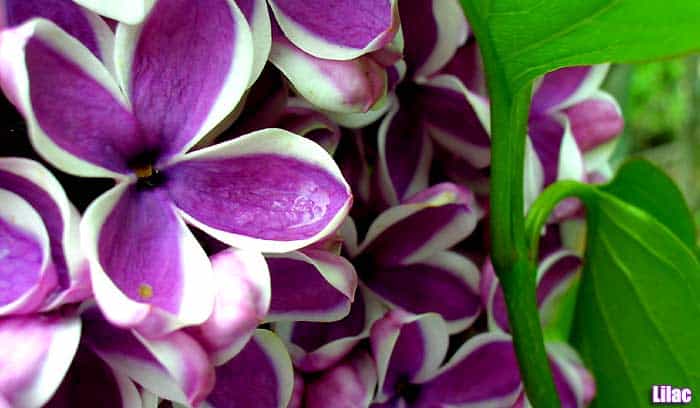
| Kingdom | Order | Family | Genus | Species |
|---|---|---|---|---|
| Plantae | Lamiales | Oleaceae | Syringa | Syringa vulgaris |
The next purple flower in this list is the Lilac Syringa vulgaris which is often considered the harbinger of spring[4], as the time of its blossoming can signal whether spring will be early or late.
- The Lilac is a large-sized shrub that can grow up to 6 to 7 meters high. It has light green oval leaves arranged oppositely to the sides of the plant. It also has Lilac to mauve colored (sometimes white) flowers arranged in panicles.
- Aside from its beautiful flowers, the Lilac is very popular because of the sweet scent produced by its flowers. And because of its “hardy” character, it was chosen to be the state flower of New Hampshire.
- These large purple flowers are widely distributed in some parts of northern and western Europe and North America. The common lilac is highly prized for its sweet, strong fragrance, which has made it popular in gardens and parks across Europe and North America. Lilacs have a rich history in horticulture, dating back to the Ottoman Empire, and were a favorite in Victorian gardens.
- Lilacs can live for hundreds of years, but their prime blooming period is when they are between 10 to 70 years old. The blooming period each spring is brief, typically lasting several weeks, when the bushes are covered in aromatic flowers.
- Lilacs are considered a symbol of love and are often associated with the beginning of spring. They are featured in many festivals, such as the famous Rochester Lilac Festival in New York, which celebrates the blooming of thousands of lilac bushes in Highland Park.
Zone Information:
Lilacs are hardy in USDA Hardiness Zones 3 through 7. They perform best in areas with distinct seasons and prefer cooler climates. Lilacs need full sun for optimal bloom and require well-drained, neutral to slightly alkaline soil. They can be sensitive to high heat, so in warmer zones, they should be planted where they can receive morning sun and afternoon shade.
Suggested Reading:
Lilac
![]()
5. Clematis (Clematis sp.)
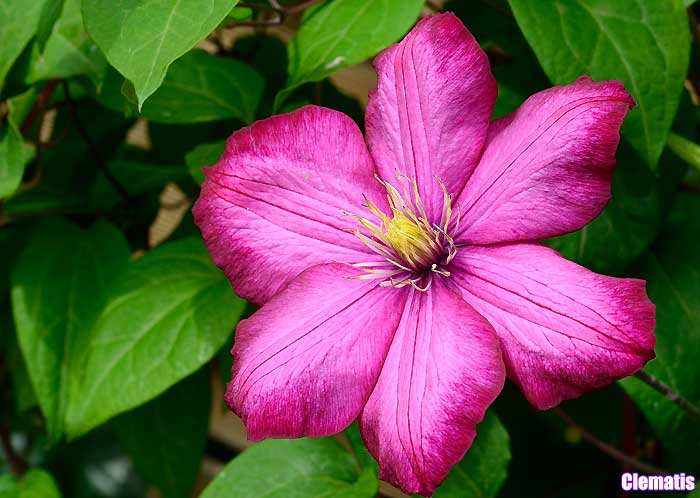
| Kingdom | Order | Family | Genus | Species |
|---|---|---|---|---|
| Plantae | Ranunculales | Ranunculaceae | Clematis | Clematis sp. |
Mainly found in the cold regions of the Northern Hemisphere, the Clematis is a versatile plant that can grow almost anywhere: from walls, containers, or even when left through different types of trees and other plants.
- The members of the genus Clematis are composed of climbing vines[5] that have beautiful purple blossoms and bright evergreen foliage.
- The Clematis is very known for its various names like Old Man’s Beard (because of its very prominent seedhead), Traveller’s Joy (a name invented by herbalist J. Gerard), and Leather Flower (because of the appearance of its petals).
- The leaves of Clematis serve as food for some caterpillar species.
- Clematis species show remarkable adaptability to different environmental conditions. For example, Clematis flammula var. maritima adapts to harsh sand dune conditions, exhibiting unique growth habits and mechanical properties suited to its challenging habitat.
- Clematis are valued not only for their beautiful flowers but also for their role in vertical landscaping. They can effectively cover walls, trellises, and fences, providing lush greenery and vibrant colors, which enhance the aesthetic value of residential and public spaces.
- Challenges in Cultivation: Despite their beauty, clematis can be susceptible to several diseases and pests, such as wilt, rust, and powdery mildew. Effective management and careful selection of disease-resistant varieties are crucial for maintaining healthy plants.
Zone Information:
Clematis are hardy in USDA Hardiness Zones 4 through 9. They thrive in full sun to partial shade, requiring well-drained soil. A key to their care is that their “heads” (flowers) like sun while their “feet” (roots) prefer cool, shaded conditions, often achieved by other plants or mulch covering the root area.
Suggested Reading:
![]()
6. Salvia (Salvia sp.)
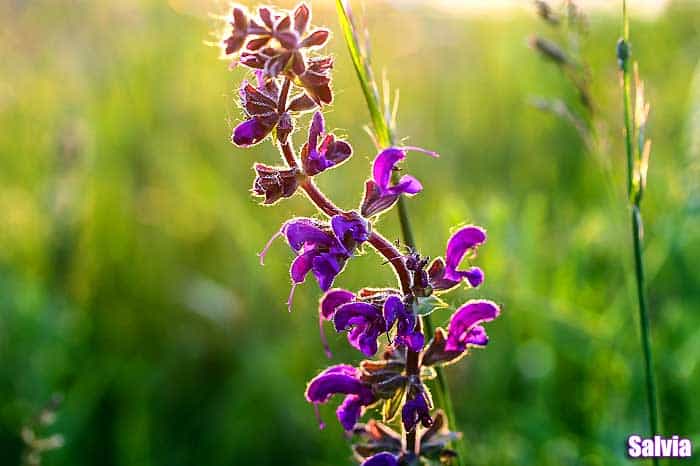
| Kingdom | Order | Family | Genus | Species |
|---|---|---|---|---|
| Plantae | Lamiales | Lamiaceae | Salvia | Salvia sp. |
The next purple flower in this list is the Salvia[6], the largest genus in the Family Lamiaceae (Mint/Deadnettle family). Usually, Salvias grow from 30 centimeters up to 3 meters high.
- Salvias, which are native to North America, are very easy to cultivate as they are very drought-tolerant and bloom all summer long.
- Purple Salvias are very appealing for hummingbirds; hence, these purple flowers are often referred to as the “Hummingbird Magnet“.
- Salvia plants are valued not only for their ornamental qualities but also for their culinary and medicinal applications. For example, Salvia officinalis, commonly known as sage, is widely used as a culinary herb and for its essential oils in traditional medicine for its antioxidant, antimicrobial, and anti-inflammatory properties.
- Many Salvia species are excellent for attracting pollinators like bees and butterflies due to their abundant nectar. This makes them an important part of ecological gardening, contributing to the health of pollinator populations.
- Salvia species exhibit a remarkable ability to adapt to different environmental conditions, which is reflected in their wide distribution across various climates and habitats. This adaptability makes them particularly valuable for landscaping in challenging conditions where other plants might not thrive.
Zone Information:
Salvia species are generally hardy in USDA Hardiness Zones 5 through 9, depending on the specific type. They thrive in full sun and well-drained soil. Salvias are adaptable to various environmental conditions, making them suitable for a range of garden settings.
![]()
7. Purple Freesia (Freesia sp.)
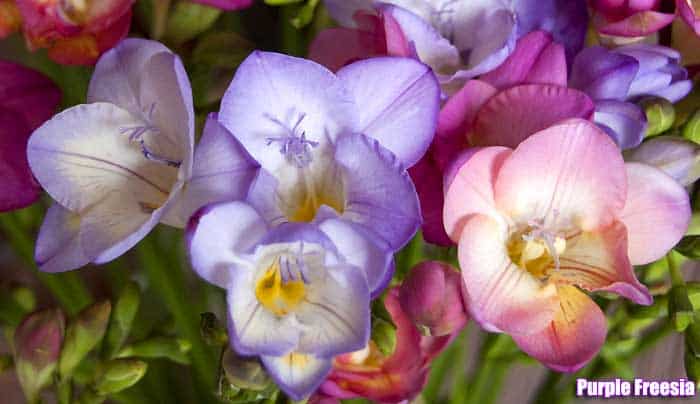
| Kingdom | Order | Family | Genus | Species |
|---|---|---|---|---|
| Plantae | Asparagales | Iridaceae | Freesia | Freesia sp. |
Freesias are herbaceous flowering plants that are members of the plant family Iridaceae. Freesia[7] flowers are funnel-shaped and come in a variety of colors (white, yellow, pink, purple); however, the most popular are the purple ones.
- The name “freesia” was derived from its discoverer, German botanist Friedrich Freese.
- Purple Freesias are endemic to Kenya and some regions of South Africa.
- Freesias are well known for their sweet, fruity fragrance, which is used in many perfumes and scented products. The delightful scent of freesia flowers makes them a favorite choice for both cut flowers and garden planting.
- Although focusing on purple freesia, it’s notable that Freesia hybrids are available in a variety of colors, including white, yellow, pink, red, and blue. This color diversity is due to selective breeding and hybridization efforts to enhance ornamental value.
- Freesia extracts have been studied for potential anti-inflammatory properties, providing an interesting link between the ornamental and therapeutic uses of the plant. This highlights the potential for using freesia beyond ornamental purposes.
Zone Information:
Purple Freesias are best grown in USDA Hardiness Zones 9 through 11. They prefer full sun to partial shade and thrive in well-drained soils. Freesias are typically grown from corms, which should be planted in the fall for spring blooms in these zones.
![]()
8. Catmint (Nepeta sp.)
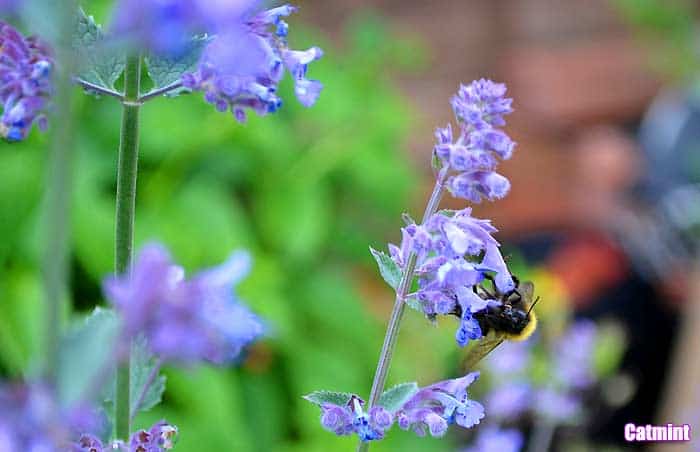
| Kingdom | Order | Family | Genus | Species |
|---|---|---|---|---|
| Plantae | Lamiales | Lamiaceae | Nepeta | Nepeta sp. |
The Nepeta or Catmint is a perennial flowering plant related to catnips (favored by cats). The most common type are those with bluish-purple flowers that grow during early summer.
- Catmints usually grow from one foot up to 3-4 feet high, hence are useful in making garden borders and edges.
- This plant, having silver foliage, is drought-resistant and grows well during hot weather.
- The oil in catmint contains nepetalactone, which is irresistible to most cats and causes them to exhibit euphoric behaviors. This interaction is a well-documented phenomenon, providing both amusement and behavioral enrichment for domestic cats.
- Apart from its effects on cats, catmint has been used in traditional medicine for its mild sedative effects on humans, treating ailments from headaches to anxiety and aiding in sleep.
- Catmint is also beneficial for attracting pollinators such as bees and butterflies to the garden. Its long flowering period and abundant nectar make it an excellent choice for biodiversity gardens aiming to support local wildlife.
Zone Information:
Catmint, including popular species like Nepeta cataria, is hardy in USDA Hardiness Zones 3-9. It thrives in full sun to partial shade and prefers well-drained soil. Catmint is drought-tolerant once established, making it a low-maintenance choice for various garden settings.
Suggested Reading:
Catmint
Flower Type: Annuals/Perennials![]()
9. Dwarf Iris (Iris sibirica ‘Dwarf Varieties’)
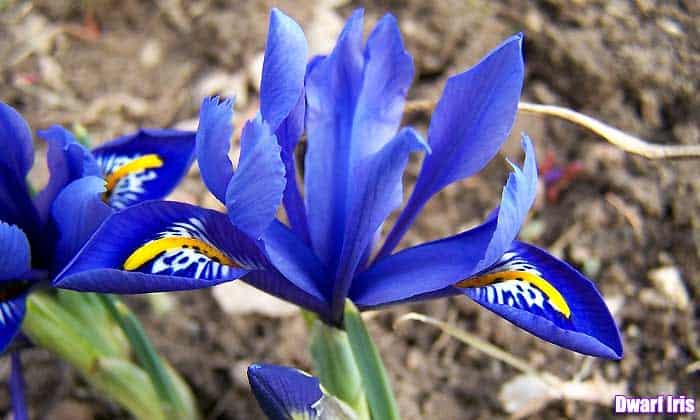
| Kingdom | Order | Family | Genus | Species |
|---|---|---|---|---|
| Plantae | Asparagales | Iridaceae | Iris | Iris sibica |
As its name suggests, the Dwarf Iris[8] is smaller as compared to the typical irises we know. The Dwarf Iris is distinguishable by the crests in its sepals (leaf-like structure below the petals).
- Relative to common irises that grow from 15 to 38 inches high, Dwarf Irises are just 6 inches tall.
- This plant’s small purple spring flowers are fragrant and thus appeal to insects and animals. They usually bloom in dry pine forests during the early spring.
- The name of the Dwarf Iris and other native irises come from the Greek goddess Iris, the goddess of the rainbow.
- Siberian Iris is known for its robust health and resistance to common iris diseases, such as iris borer and bacterial soft rot, making it a favored choice for gardeners looking for low-maintenance perennial options.
- Dwarf varieties of Siberian Iris are particularly valued for their compact form and ability to blend into various garden settings, including border fronts, rock gardens, and as ground cover, providing vibrant color and texture.
Zone Information:
Siberian Iris, including its dwarf varieties, is hardy in USDA Hardiness Zones 3 through 9. These irises thrive in full sun to partial shade and prefer moist, well-drained soil. They are particularly adept at tolerating wet conditions compared to other iris types, making them suitable for waterside plantings or in a garden with consistent moisture.
Suggested Reading:
Miniature Gladiolus
Flower Type: Perennials![]()
10. Lavender (Lavandula spica)
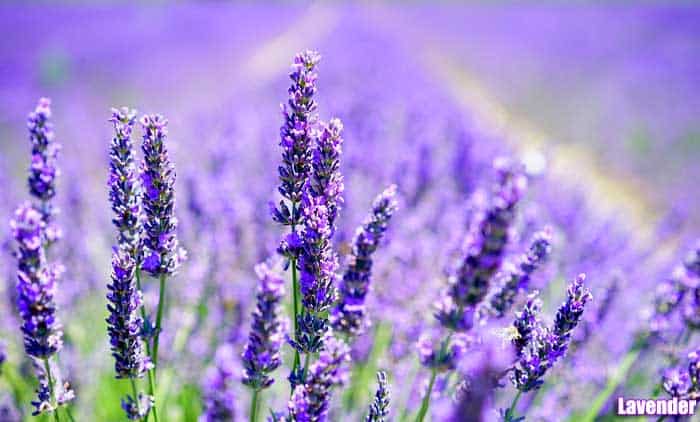
| Kingdom | Order | Family | Genus | Species |
|---|---|---|---|---|
| Plantae | Lamiales | Lamiaceae | Lavandula | Lavandula spica |
The next purple flower plant to make it to this list is the Lavender[9] Lavandula spica, which is endemic to many continents of the world, like Europe, Africa (northern and eastern), and Asia (southwest).
- This plant has purple to light violet flowers in spike inflorescence.
- These lavender-colored flowers are very popular in herbal medicine as they are commercially packaged as herbal tea and essential oil to induce sleep and relaxation.
- The name of this plant is derived from the Latin word, “lavare“, which means “to wash“, probably referring to the use of the extracts of the plant.
- Lavandula spica has been identified as a mycorrhizal-dependent species, which means it relies significantly on symbiotic relationships with fungi to thrive in its natural habitat. This dependency is crucial for its survival and growth in semiarid Mediterranean ecosystems, which are often nutrient-poor and degraded.
- Spike lavender is highly valued for its essential oil, which is rich in camphor and used in the fragrance industry. Unlike other lavender oils, which are prized for their floral notes, spike lavender oil is more pungent and is used for its stimulating and antiseptic properties.
- Research has shown that Lavandula spica exhibits significant drought tolerance, an adaptation that allows it to survive in arid conditions where other plants might fail. This resilience is partly due to its ability to form robust root systems that enhance water uptake and retention.
Zone Information:
Lavandula spica, commonly known as spike lavender, is hardy in USDA Hardiness Zones 5 through 8. It thrives in full sun and well-drained soil, preferring slightly alkaline conditions. This variety of lavender is particularly well-suited to hot, dry climates and is more tolerant of humid conditions than many other lavender species.
Suggested Reading:
Lavandula
Flower Type: Perennials![]()
11. Balloon flower (Platycodon grandiflorus)
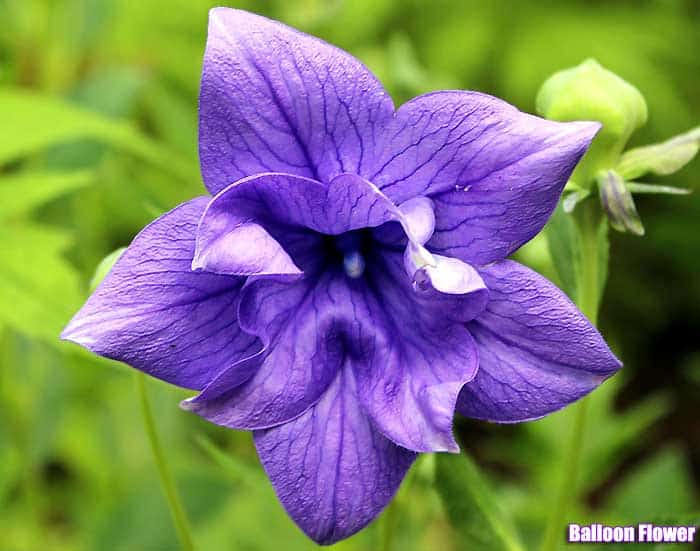
| Kingdom | Order | Family | Genus | Species |
|---|---|---|---|---|
| Plantae | Asterales | Campanulaceae | Platycodon | Platycodon grandiflorus |
The common name of the next flowering plant in this list makes perfect sense. The Balloon flower[10] Platycodon grandifloras have flower buds that are inflated and can be popped open.
- These flowers with purple petals, which usually appear in bluish-purple colors (sometimes white and pink), are best suited to the dry climate and can tolerate light shades.
- Interestingly, this plant has foliage that turns to clear gold during the winter.
Suggested Reading:
Balloon Flower
Flower Type: Perennials![]()
12. Lisianthus (Eustoma grandiflorum)
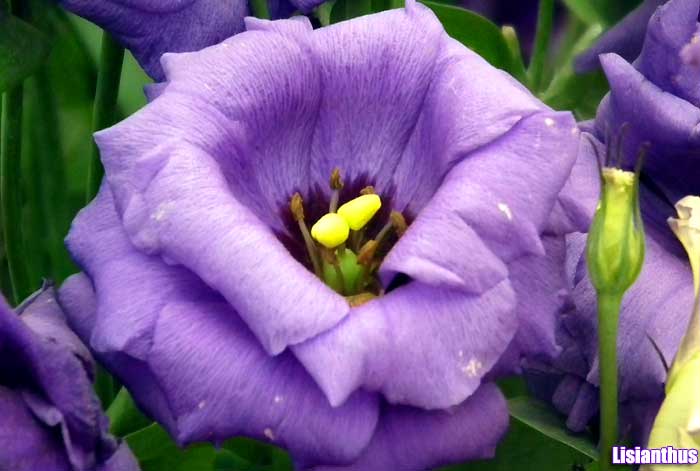
| Kingdom | Order | Family | Genus | Species |
|---|---|---|---|---|
| Plantae | Gentianales | Gentianaceae | Eustoma | Eustoma grandiflorum |
Endemic to the regions of the Caribbean, Mexico, and South America, the Lisianthus[11] Eustoma grandiflorum (long-stem purple flowers) is a popular ornamental plant that grows 15 to 60 centimeters tall.
- The Lisianthus is very much known for its bluish-green succulent leaves and light purple bell-shaped flowers that arise from its long stems.
- These tall purple flowers grow well on grasslands.
Suggested Reading:
Eustoma grandiflorum
Flower Type: Biennials![]()
13. Lily of the Nile (Agapanthus africanus)
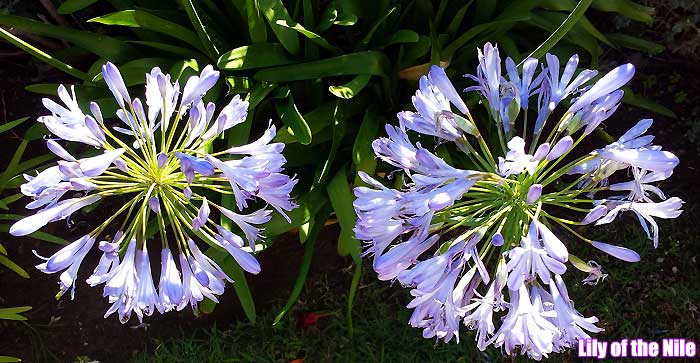
| Kingdom | Order | Family | Genus | Species |
|---|---|---|---|---|
| Plantae | Asparagales | Amaryllidaceae | Agapanthus | Agapanthus africanus |
As its name suggests, Lily of the Nile[12] is endemic to South Africa. It is also called the Agapanthus or the African Blue Lily.
- The name of this plant is derived from the two Greek words “agape” and “aanthus” which mean “love” and “flower” respectively.
- Agapanthus plants have flowers that have purple, blue, and sometimes white petals that look like lilies.
Suggested Reading:
Agapanthus
Flower Type: Perennials![]()
14. Morning glory (Ipomoea purpurea)
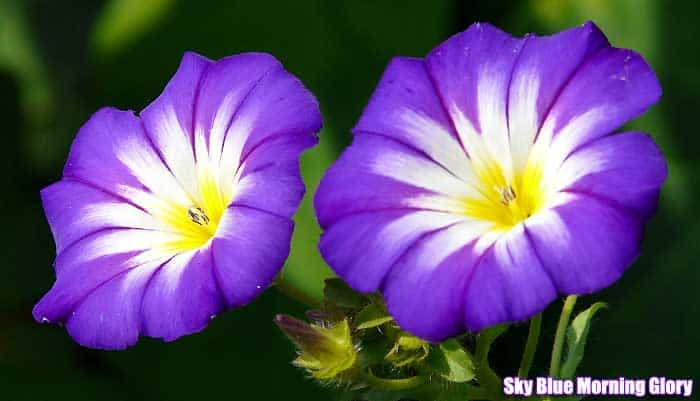
| Kingdom | Order | Family | Genus | Species |
|---|---|---|---|---|
| Plantae | Solanales | Convolvulaceae | Ipomoea | Ipomoea purpurea |
As its name suggests, Morning Glory flowers[13] Ipomea purpurea blossom in the early morning and start to wrinkle a few hours after.
- This plant climbs with thin stems and cordate leaves. Its bell-shaped flowers come in purple, pink, magenta, and white.
- Because of its flowers, insects as well as hummingbirds are easily attracted.
- In medicine, the Morning Glory is very much popular because of its seeds that have laxative properties.
Suggested Reading:
![]()
15. Bittersweet nightshade (Solanum dulcamara)
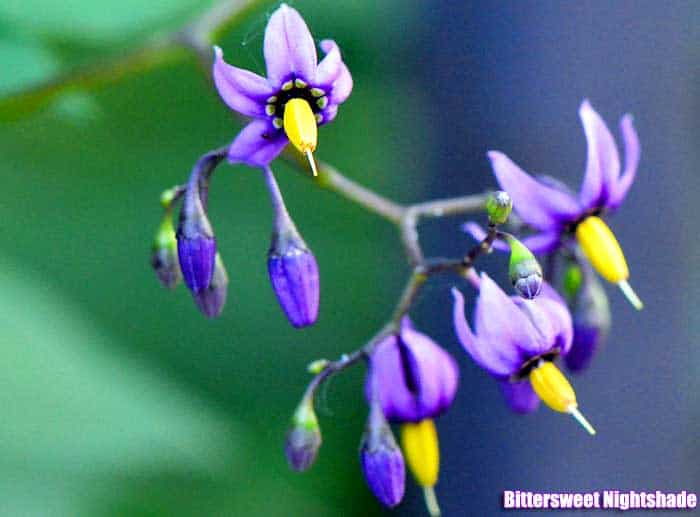
| Kingdom | Order | Family | Genus | Species |
|---|---|---|---|---|
| Plantae | Solanales | Solanaceae | Solanum | Solanum dulcamara |
Coming from the Nightshade family or Solanaceae, the Bittersweet nightshade[14] is a perennial plant distinguished by its herbaceous branches that die every year.
- Its star-shaped flowers have purple petals and yellow heads.
- Like any other family members of Solanaceae, this plant contains the toxin solanine. When crushed, its leaves produce a very unpleasant smell and are poisonous to animals.
- This plant was originally native to Europe but is now widely grown in North America.
Suggested Reading:
Bittersweet
Flower Type: Shrubs![]()
16. Wild Indigo (Baptisia australis)
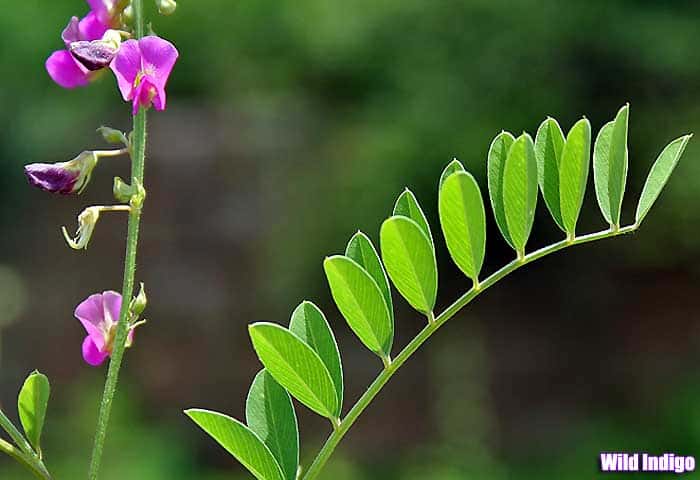
| Kingdom | Order | Family | Genus | Species |
|---|---|---|---|---|
| Plantae | Fabales | Fabaceae | Baptisia | Baptisia australis |
Wild indigo[15] comes from the Family Fabaceae, the same plant family where clovers and peas belong. Wild indigos are typically seen along the Pacific coasts of the USA.
- These types of purple wildflowers, which can reach 1 to 2 meters high, are characterized by their bright purple flowers positioned in spike inflorescence.
- The plant is used as a dye, resulting in an indigo color, hence the plant’s name.
- Despite being included in the list of toxic plants, the roots of Wild Indigos are used to produce medicine.
Suggested Reading:
False Indigo
Flower Type: Perennials![]()
17. Monkshood (Aconitum variegatum)
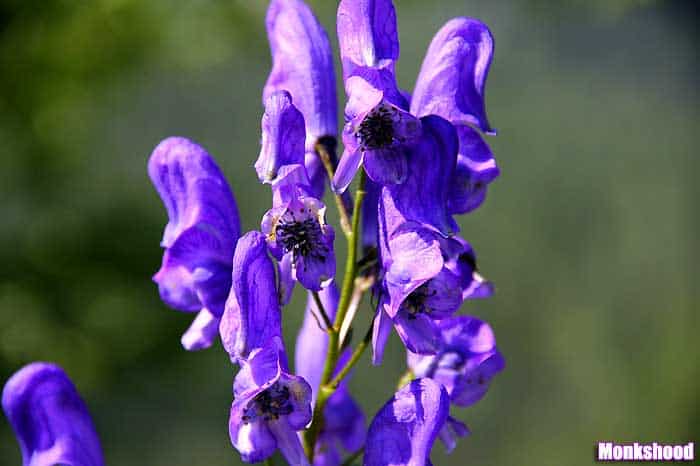
| Kingdom | Order | Family | Genus | Species |
|---|---|---|---|---|
| Plantae | Ranunculales | Ranunculaceae | Aconitum | Aconitum variegatum |
The next plant in this list is the Monkshood plant that grows in the mountainous areas in the northern hemisphere. This plant, which has distinct purple flowers, derived its name from the appearance of its sepals which somehow look like monks’ cowls.
- Its genus name Aconitum[16] comes from the Greek word “akonitos” which means “pointed cone“.
- Despite being attractive, this plant is extremely poisonous (due to the compound aconite), and ingestion, even in small quantities, ingestion may cause gastrointestinal problems.
Suggested Reading:
![]()
18. China Aster (Callistephus chinensis)
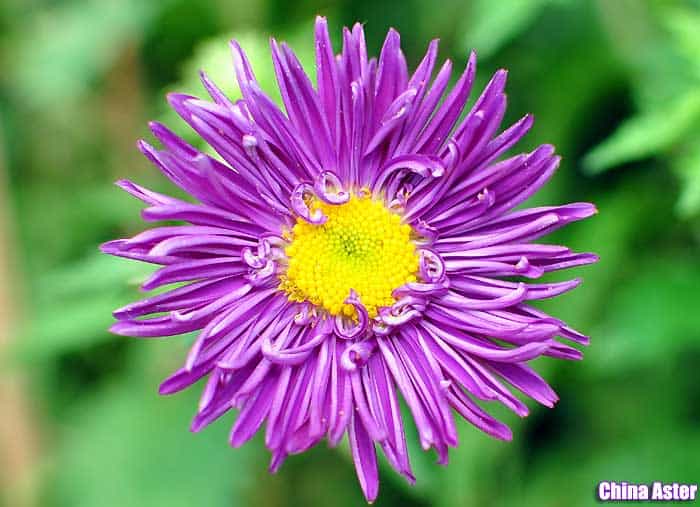
| Kingdom | Order | Family | Genus | Species |
|---|---|---|---|---|
| Plantae | Asterales | Asteraceae | Callistephus | Callistephus chinensis |
As its name suggests, the China Aster[17] is native to China. This plant stands 12 to 36 inches tall and is straightforward to distinguish because its daisy-like flowers resemble pompoms.
- The China Aster comes in various colors like purple, blue, white, yellow, red, and pink.
![]()
19. Hydrangea (Hydrangea macrophylla)
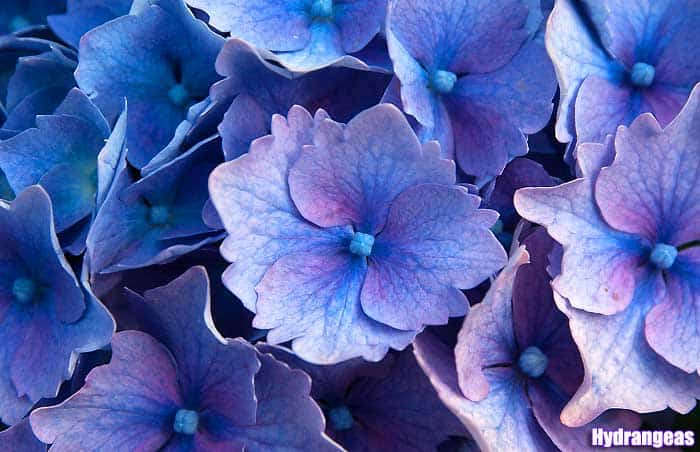
| Kingdom | Order | Family | Genus | Species |
|---|---|---|---|---|
| Plantae | Cornales | Hydrangeaceae | Hydrangea | Hydrangea macrophylla |
Native to southern and eastern Asia and some parts of America, the Hydrangea is an evergreen plant that grows from early spring to late autumn.
- Interestingly, the color of the Hydrangea flower[18] can indicate the pH of the soil it is planted in. Purple to blue flowers indicate the soil is acidic, whereas pink ones show it is acidic.
Suggested Reading:
Hortensia
![]()
20. Cosmos (Cosmos bipinnatus)
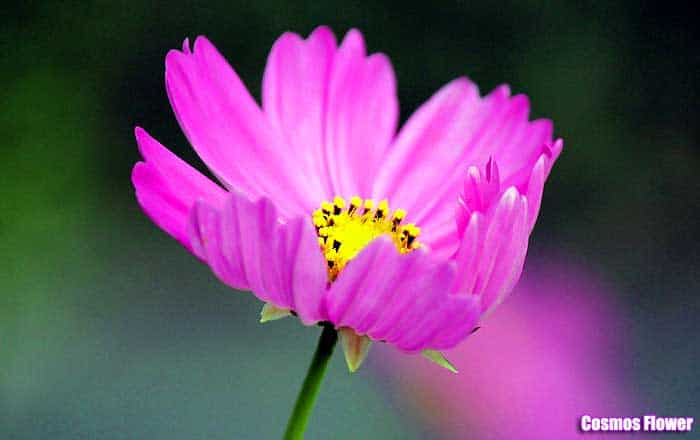
| Kingdom | Order | Family | Genus | Species |
|---|---|---|---|---|
| Plantae | Asterales | Asteraceae | Cosmos | Cosmos bipinnatus |
At present, there are only 3 known species of Cosmos[19]: Cosmos bipinnatus, Cosmos sulphureus, and Cosmos atrosanguineus. Among the three, the first one is the most common.
- Cosmos bipinnatus is a species characterized by a yellow-eyed head and purple to burgundy red outer petals.
- These purple flowers with yellow centers can grow from 48 centimeters to 1.2 meters tall.
- During the 1800s, Cosmos plants were first introduced to Mexico.
![]()
21. Cattleya Orchid (Cattleya labiata)
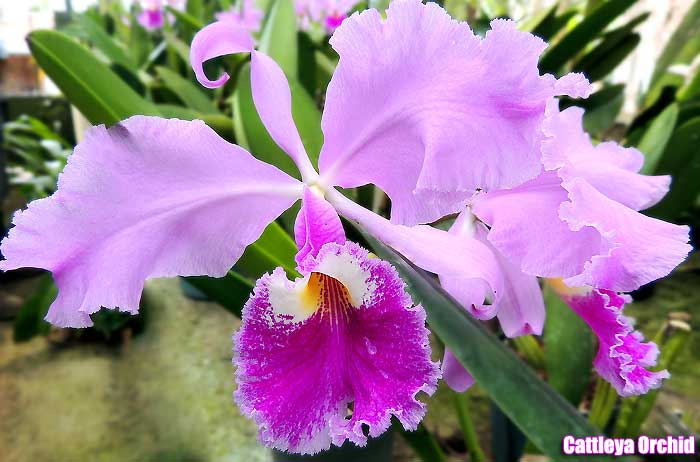
| Kingdom | Order | Family | Genus | Species |
|---|---|---|---|---|
| Plantae | Asparagales | Orchidaceae | Cattleya | Cattleya labiata |
Cattleya orchids[20] come in a wide variety of colors, like light purple, pink, and white. These purple and white flowers colored flowers are native to Central and South America and thrive in warm temperatures and slightly bright areas.
- This plant was named after horticulturist William Cattley, who accidentally discovered the plant en route from Brazil to England.
- The Cattleya orchid is also called the Corsage orchid because, in the old times, women used it as corsage during special occasions.
Suggested Reading:
Cattleya
![]()
22. Candytuft (Iberis sempervirens)
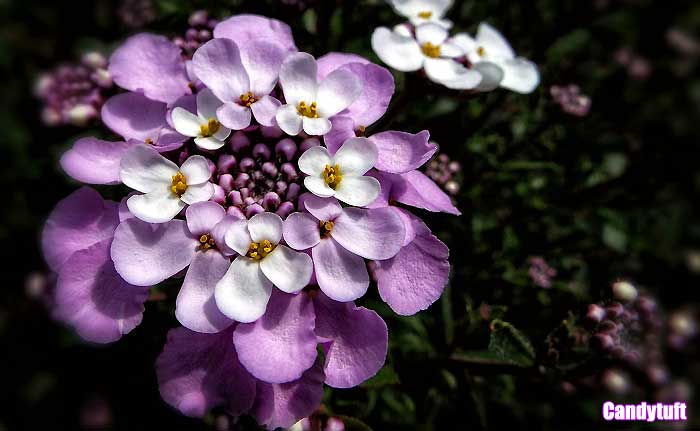
| Kingdom | Order | Family | Genus | Species |
|---|---|---|---|---|
| Plantae | Brassicales | Brassicaceae | Iberis | Iberis sempervirens |
The next flower in this list is the Candytuft[21], a plant endemic to Europe but has already adapted to some regions in the United States.
- This evergreen plant stands 12 to 18 inches tall and has delicate Lilac, pink, and white flowers that blossom during early spring or summer. After that, it may or may not reblossom during the fall.
Suggested Reading:
Persian Candytuft
Flower Type: Perennials![]()
23. Fuchsia (Fuchsia sp.)
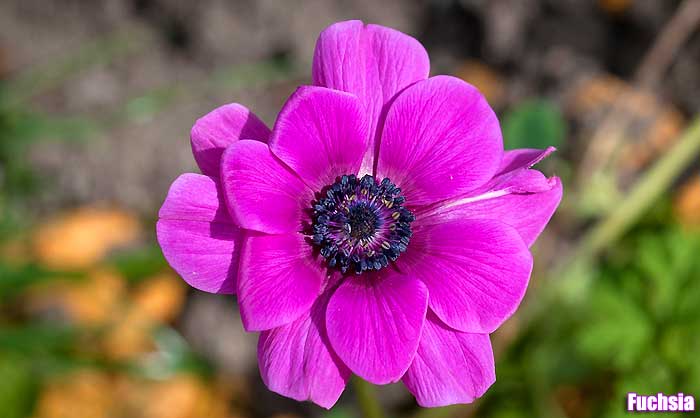
| Kingdom | Order | Family | Genus | Species |
|---|---|---|---|---|
| Plantae | Myrtales | Onagraceae | Fuchsia | Fuchsia sp. |
The Fuchsia flower is very distinguishable due to its two-toned teardrop-shaped flowers. Its sepals (leaves) are bright red, whereas its petals are purple. Because of its colorful appearance, insects and hummingbirds are easily attracted.
- Fuchsia plants are highly sensitive to hot temperatures, so care is very much advised, especially during the summer.
- The fruits of all species of Fuchsia are edible.
Suggested Reading:
Lady’s-eardrop
![]()
24. Foxglove (Digitalis purpurea)
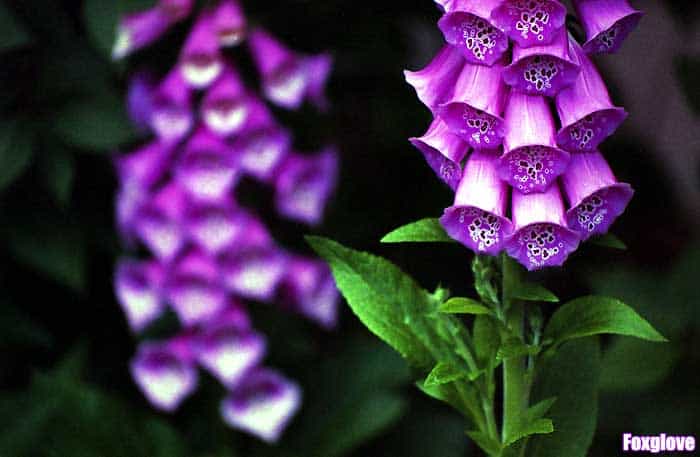
| Kingdom | Order | Family | Genus | Species |
|---|---|---|---|---|
| Plantae | Lamiales | Plantaginaceae | Digitalis | Digitalis purpurea |
Standing 2 to 5 feet tall, the Foxglove plant[22] Digitalis purpurea is easily distinguishable because of its tall purple (sometimes pink, red, yellow, and white) flowers that bear speckled throats.
- The leaves of this plant contain a compound called the digitalis, which is considered poisonous but is viewed as a potential cure for heart ailments.
- This plant is endemic to Europe’s western and southwestern parts.
Suggested Reading:
Foxglove
Flower Type: Biennials![]()
25. Liatris (Liatris spicata)
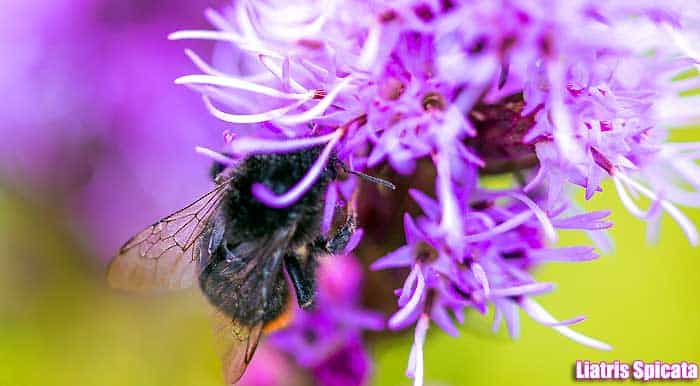
| Kingdom | Order | Family | Genus | Species |
|---|---|---|---|---|
| Plantae | Asterales | Asteraceae | Liatris | Liatris spicata |
Last but not least purple flower is the Liatris[23] or the Blazing Star. Known as an insect magnet, the Liatris can attract Monarch and Swallowtail butterflies.
- Like any other members of the Family Asteraceae, the Liatris grow from bulbs or corms that start to arise during spring and blossom during late summer.
- While this plant can survive a relatively dry climate, it can also tolerate moderate cold temperatures. Interestingly, its foliage can turn into light gold during winter.
Suggested Reading:
Gayfeather
Flower Type: Perennials![]()
More Purple/Indigo Flowers
Adder’s Tongue
Flower Type: PerennialsAfrican Flame Lily
Flower Type: PerennialsAmaryllis
Flower Type: PerennialsAmmi majus
Flower Type: PerennialsAmur Adonis
Flower Type: Annuals/PerennialsAnemone
Flower Type: PerennialsAngelonia
Flower Type: Annuals/PerennialsAromatic Aster
Flower Type: PerennialsArtemisia
Flower Type: PerennialsArtichoke thistle
Flower Type: PerennialsAugust Lily
Azalea
Flower Type: PerennialsBasket-of-Gold
Flower Type: PerennialsBighead Knapweed
Flower Type: PerennialsBilly Button
Flower Type: PerennialsBleeding Heart
Flower Type: PerennialsBlood Root
Flower Type: PerennialsBlood-Red Iris
Flower Type: PerennialsBluebell Flower
Browallia
Flower Type: Annuals/PerennialsBryony
Flower Type: PerennialsBuckbean
Flower Type: PerennialsBugleweed
Flower Type: PerennialsBugloss
Bupleurum
Flower Type: Annuals/PerennialsCanaigre Dock
Flower Type: PerennialsCarnation
Flower Type: Annuals/PerennialsCasa Blanca
Flower Type: PerennialsCaspia
Flower Type: Annuals/PerennialsCastor Bean
Flower Type: PerennialsChinese Peony
Flower Type: PerennialsChives
Flower Type: PerennialsColtsfoot
Flower Type: PerennialsColumbine
Flower Type: PerennialsComfrey
Flower Type: PerennialsCommon Peony
Flower Type: PerennialsConvallaria
Flower Type: PerennialsCoral bells
Flower Type: PerennialsCosmos
Flower Type: Annuals/PerennialsCreeping Lettuce
Flower Type: PerennialsCrocus
Flower Type: PerennialsCyclamen
Flower Type: PerennialsDaffodil
Flower Type: PerennialsDaisy
Flower Type: PerennialsDaylily
Flower Type: PerennialsDead Nettle
Flower Type: PerennialsDianthus
Flower Type: Annuals/PerennialsDiascia
Flower Type: Annuals/PerennialsDittany of Crete
Flower Type: PerennialsDock
Flower Type: PerennialsDogwood
Flower Type: PerennialsDragon’s Tongue
Flower Type: PerennialsDutchman’s Breeches
Flower Type: PerennialsEdelweiss
Flower Type: PerennialsEdulis Tulip
Flower Type: PerennialsElastic Momordica
Flower Type: Annuals/PerennialsEnchanter’s Nightshade
Flower Type: PerennialsEpimedium
Flower Type: PerennialsEupatorium
Flower Type: PerennialsEverlasting
Flower Type: Annuals/PerennialsFalse Bird of Paradise
Flower Type: PerennialsFalse Spirea
Flower Type: PerennialsFernleaf Yarrow
Flower Type: PerennialsFeverfew
Flower Type: PerennialsField Wood-rush
Flower Type: PerennialsFig Marigold
Flower Type: PerennialsFlowering Fern
Flower Type: PerennialsFlowering Reed
Flower Type: PerennialsForget-Me-Not
Flower Type: PerennialsFountain Grass
Flower Type: PerennialsFour O’clock
Flower Type: PerennialsFoxtail Fern
Flower Type: PerennialsGaillardia
Flower Type: Annuals/PerennialsGas Plant
Flower Type: PerennialsGazania
Flower Type: Annuals/PerennialsGeranium
Flower Type: Annuals/PerennialsGerbera
Flower Type: PerennialsGeum
Flower Type: PerennialsGilliflower
Flower Type: Annuals/PerennialsGinger
Flower Type: PerennialsGlobe Thistle
Flower Type: PerennialsGlobeflower
Flower Type: PerennialsGlory-of-the-Snow
Goat’s Beard
Flower Type: PerennialsGoat’s rue
Flower Type: PerennialsHardy Geranium
Flower Type: PerennialsHelenium
Flower Type: PerennialsHeliotrope
Flower Type: Annuals/PerennialsHellebore
Flower Type: PerennialsHepatica
Flower Type: PerennialsHibiscus Varieties
Flower Type: PerennialsHollowroot
Flower Type: PerennialsHypericum Berry
Flower Type: Annuals/PerennialsIberis amara
Flower Type: Annuals/PerennialsIce plant
Flower Type: PerennialsImpatiens
Flower Type: Annuals/PerennialsIndian cane
Flower Type: PerennialsIndian cress
Flower Type: Annuals/PerennialsIris
Ivy
Flower Type: PerennialsJack-in-the-Pulpit
Flower Type: PerennialsJapanese Canopy
Flower Type: PerennialsJapanese Chrysanthemum
Flower Type: PerennialsJapanese Honeysuckle
Flower Type: PerennialsJapanese Iris
Flower Type: PerennialsJupiter’s Beard
Flower Type: PerennialsKaffir Lily
Flower Type: PerennialsKalanchoe
Flower Type: PerennialsKennedia
Flower Type: PerennialsLace Fern
Flower Type: PerennialsLady’s Bedstraw
Flower Type: PerennialsLady’s Mantle
Flower Type: PerennialsLady’s Slipper
Flower Type: PerennialsLeadwort
Flower Type: PerennialsLemon Balm
Flower Type: PerennialsLily
Flower Type: PerennialsLittle Larkspur
Flower Type: PerennialsLobelia
Flower Type: Annuals/PerennialsLoosestrife
Flower Type: PerennialsLupine
Flower Type: Annuals/PerennialsMandrake
Flower Type: PerennialsMarguerite Daisy
Flower Type: PerennialsMarjoram
Flower Type: PerennialsMarsh Gladiolus
Flower Type: PerennialsMarshmallow
Flower Type: PerennialsMazus
Flower Type: PerennialsMeadowsweet
Flower Type: PerennialsMilkwort
Flower Type: PerennialsMing fern
Flower Type: PerennialsMistletoe
Flower Type: PerennialsMisty Blue Limonium
Montbretia
Flower Type: PerennialsMonte Cassino
Flower Type: Annuals/PerennialsMoonflower
Flower Type: PerennialsMother-in-law Tongue
Flower Type: PerennialsMotherwort
Flower Type: PerennialsMugwort
Flower Type: PerennialsNemesia
Flower Type: Annuals/PerennialsNerine
Flower Type: PerennialsNettle
Flower Type: PerennialsNicotiana
Flower Type: Annuals/PerennialsNierembergia
Flower Type: Annuals/PerennialsOld-Man’s Beard
Flower Type: PerennialsOrnithogalum
Flower Type: PerennialsOsteospermum
Flower Type: Annuals/PerennialsPainted Tongue
Flower Type: Annuals/PerennialsPaper Reed
Flower Type: PerennialsPeony
Flower Type: PerennialsPeperomia
Flower Type: PerennialsPeppermint
Flower Type: PerennialsPerennial Flax
Flower Type: PerennialsPheasant’s eye
Flower Type: PerennialsPhlox
Flower Type: Annuals/PerennialsPink Musk
Flower Type: PerennialsPolemonium
Flower Type: PerennialsPolianthes tuberosa
Flower Type: PerennialsPrickly pear
Flower Type: PerennialsPrickly Water Lily
Flower Type: Annuals/PerennialsPrimrose
Flower Type: Annuals/PerennialsQueens Cup
Flower Type: PerennialsRanunculus
Flower Type: PerennialsRattlesnake
Flower Type: PerennialsRed Cranesbill
Flower Type: Annuals/PerennialsRed Rover
Flower Type: Annuals/PerennialsRestharrow
Flower Type: PerennialsRock Soapwort
Flower Type: PerennialsRoyal Bluebell
Flower Type: PerennialsScabiosis
Flower Type: Annuals/PerennialsScille
Flower Type: PerennialsSea Thrift
Flower Type: PerennialsShasta Daisy
Flower Type: PerennialsSilverweed
Flower Type: PerennialsSkunk Cabbage
Flower Type: PerennialsSnow in Summer
Flower Type: PerennialsSolomon’s Seal
Flower Type: PerennialsSpeedwell
Flower Type: PerennialsSpider Lily
Flower Type: PerennialsSpring Beauty
Flower Type: PerennialsSquirrel Corn
Flower Type: PerennialsStarwort
Flower Type: PerennialsSweet Woodruff
Flower Type: PerennialsThroatwort
Flower Type: Annuals/PerennialsTiger Lily
Flower Type: PerennialsToad Lily
Flower Type: PerennialsTrientalis
Flower Type: PerennialsTurpentine Broom
Flower Type: ShrubsWhite Trillium
Flower Type: PerennialsWild Narcissus
Flower Type: Perennials![]()
Purple flowers are a captivating addition to any garden, offering a rich hue that symbolizes royalty, mystery, and elegance. Growing these flowers requires attention to their needs, such as well-drained soil, full sun to partial shade, and the right growing zones. Moist soil conditions are often preferred, allowing for lush and vibrant growth.
Lavender is the most well-known among the many varieties of purple flowers, with its soothing fragrance and delicate blossoms. Verbena and Bellflower are other popular choices, each with unique characteristics that make them stand out. The whimsical balloon flower, the climbing Clematis, and the delicate Dwarf Iris are also cherished for their distinctive appearances.
Catmint and Salvia are known for their aromatic qualities, while Allium and Monkshood add a touch of the exotic to any garden. Alpine Betony and Lily of the Nile are perfect for those looking for something unusual. Anemone, Bee Orchid, and Bittersweet Nightshade provide a wild and natural look, while Wild Indigo and Bell heather offer a rustic charm.
Blue-Eyed Grass and Wild Hyacinth are perfect for those looking for a softer shade of purple, while China Aster and Canterbury Bells provide a more vibrant color. Dianthu Dianthus llus and Cattleya Orchid is known for their luxurious appearance, and Sea Thistle and Purple Calla lily add a touch of the extraordinary.
Cosmos and Common comfrey are known for their medicinal properties, while butterflies and bees belove Coneflower and Candytuft. Cyclamen and Crocus are early bloomers, providing color in the cooler months, while Columbine and Dendrobium Orchid is known for their intricate shapes.
Fuchsia, Foxgloves, and Gladiolus are quite popular among gardeners who love to cut flowers due to their striking appearance. Waxflower Perennial Geranium and Heliotrope are choices for borders and containers as they bloom throughout the season. Honesty, Liatris, Lilac, and lupin complete the list with their characteristics that make them additions to any garden.
To summarize, purple flowers offer a range of options for garden enthusiasts. From the shades of lilac to the hues of violet, there’s a purple flower suitable for every preference and garden condition. By ensuring they have drained soil, ample sunlight, and proper moisture levels according to their requirements, you can enjoy the beauty and diversity of these remarkable plants all season long.
![]()
Frequently Asked Questions
What makes sweet peas a favorite among purple flowers?
Sweet peas earn a special spot among purple flowers. Gardeners love them for their royal and proud look. The deep shade of purple brings peace to the mind. They give off a lovely scent, making them top picks for cut flowers.
Many people use these beautiful blossoms in farewell bouquets because they stand for goodbyes and departures.
How do I care for a lily of the Nile bush?
Caring for a Lily of the Nile bush is a rewarding task for gardeners. Here are some steps to keep it healthy and vibrant:
- Select an area with full sun or partial shade. The lily of the Nile prefers both sunny and partly shaded locations.
- Ensure your soil drains well. This kind of plant does not like wet feet, which can lead to root rot.
- Water your bush often, but don’t make the soil too soggy. Regular watering is key for this plant’s survival.
- Add some fertilizer to help it bloom. Feeding your plant will make it produce more flowers.
- Give it time to reach its best bloom time. Usually, the lily of the Nile will show its full beauty after two or three years.
- Look at how well your plant handles different types of weather and soil conditions. It might surprise you! It can live in drought areas and still grow in sandy loam soil.
Can you name some types of purple annual flowers?
There are many types of purple annual flowers that you can grow. Here are a few to consider:
- Floristan Violet: This flower adds a deep shade of purple to your garden. It blooms all summer long, and the vibrant colors attract butterflies.
- Kobold: Known for its stunning purple flowers, Kobold is easy to care for. It grows in clusters, which brighten up any rock garden.
- Blue False Indigo: This plant adds color to your garden with blue and purple flowers. Its pea-like flowers bloom at the end of spring.
- Baptisia Australis: These are some of the first flowers to bloom in spring. They add a beautiful range of white to purple colors to your space.
- Purple Astilbe: These perennial plants make great cut flowers. They offer tall, fluffy, plum-colored blooms in various shades of purple.
- Pincushion Flower: Small but striking, these honey-scented flowers range from lavender-blue to deep purple.
What makes the balloon flower a distinct type of purple flower?
The balloon flower stands out among purple blooms. It gets its name from unique, balloon-like buds. These buds burst open to show star-shaped flowers. They have a deep shade of purple that can bring color to your garden.
This is seen in the Purple Passion variant of the balloon flower. There are other types, too, with colors like blue, pink, and white. But it’s not just about looks; these plants are also great for your garden as they bloom all summer!
What are the characteristics of a butterfly bush?
Butterfly bushes[23] are loved for their large, bright flowers. They come in many colors, like purple, pink, white, and more. The leaves of these bushes feel hairy if you touch them. Each bush forms lots of clusters filled with beautiful blooms.
A special kind of this plant is the Buddleia davidii, which has really big flowers that smell good. These plants attract a lot of butterflies due to their colorful look. Their blooms often feature an orange guide for nectar and release a strong scent, which is quite nice to smell! Most types of blossoms start showing early in the season on last year’s wood, so they should be trimmed after blooming.
These plants don’t just add color to your garden but also symbolize beauty. It reminds us that there’s beauty all around us and within us!
Why are passion flowers popular among purple flowers?
People love passion flowers for many reasons. Their color, purple, is often linked with royal strength. These deep shades of purple flowers bloom in fields and along fence lines. They have a neat look because their parts grow in an odd way that’s not like other flowers.
People also link them to strong faith and love for Christ. This makes the Passion flower stand out among other vibrant purple flowers.
Can you discuss more about the purple flower known as “purple flash“?
The purple flower called “Purple Flash” is a type of pepper plant. It does not grow like other plants. Its leaves are almost black with some dark purple on them. Sometimes, you may see white too.
This mix of colors makes it stand out in a garden or landscape and gives visual interest to the place where it grows.
This plant loves sun and heat, so it does best in spots with lots of light during the day. A good example is Texas landscapes, which are both sunny and hot! Even though we call it a flower, Purple Flash belongs to an annual ornamental pepper group.
The deep shade of this plant’s leaves against small flowers can add contrasting color to your garden, making everything look more vibrant! Because such deep-colored plants make great cut flowers, you can also use Purple Flash for indoor decorations as well as outside gardens.
What perennial purple bushes are suitable for planting?
Here are some perennial purple bushes to plant in your garden:
- Start with Clematis. This vine acts like a shrub. It showers your garden with multiple shades of purple blooms.
- Try Anise Hyssop, also known as Agastache foeniculum. This taller plant brings height and deep purples to your space.
- Look at Bigleaf or mophead hydrangeas, too. These popular shrubs give you showy round flowers on a large bush.
- Think about adding Delphinium, Salvia, and Lavender. These beautiful plants love full sun to bloom.
- If you want variety, other plants with purple flowers can work well, too. Lavender, Lilac, Iris, Hyacinth, Wisteria, Crocus, Verbena, Petunia, Salvia, Aster, Columbine, Bellflower, sweet pea, pansy and Viola all bring a pop of color to your garden.
How can purple flowers brighten up a rock garden?
Rock gardens take on a new glow with purple flowers. Here’s how:
- Purple blooms add color to your garden.
- A rock garden comes alive with various shades of purple.
- Small flowers like pansies, nestled among rocks, bloom into vibrant hues of lilac and lavender.
- The deep shade of purple provided by sweet pea flowers adds richness to the landscape.
- Annuals such as petunias or ageratums offer colorful clusters of flowers all summer long.
- Butterfly bush brings height and attracts butterflies, adding life to the rock garden.
- Lavender-blue flowers of balloon flower plants stand tall among the rocks and contrast sharply.
- In autumn, use purple perennial plants to complement tawny hues in the fall for a new look.
What purple flowers are suitable for planting in a large flower bush?
Many types of purple flowers are perfect for planting in a large flower bush.
- Lavender is a top choice. It has lovely purple flowers that bloom all summer long.
- Lilac bushes add a deep shade of purple to any garden.
- Iris plants bring a range from white to purple, making the garden colorful.
- Hyacinth offers small, tubular flowers in various shades of purple.
- Wisteria provides clusters of lavender-blue flowers that hang down in style.
- Crocus brings one of the first flowers to bloom in spring with a bright purple hue.
- Verbena’s vibrant purple flowers always grab attention.
- Petunia showcases trumpet-shaped flowers in pink to purple tones.
- Salvia displays deep purple blooms that attract butterflies.
- Aster bursts out with colorful Daisy clusters – like lilac or mauve hues flowers.
- Columbine shows off smaller cup-shaped lavender flowers, which are very unique.
- Sweet pea vines give fragrance-filled lavender-blue pea-like papery flowers to the bush.
- Pansy presents a broad color palette from blue to deep violet, making them exciting flowering plants.
- Violas, like pansies, can offer colors from blue to deep shade of lavender.
- Shrubs like fuschia, rhododendrons, chaste trees, and sage can also produce rich, dark-shaded, light-hued, violet-purple blossoms.
![]()
What’s your favorite purple flower from the above list?


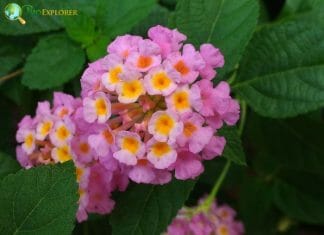
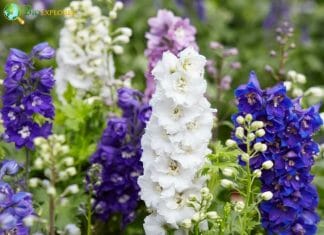
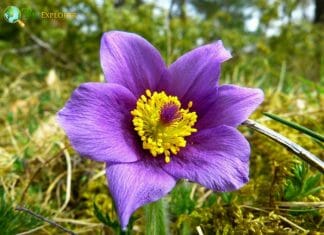
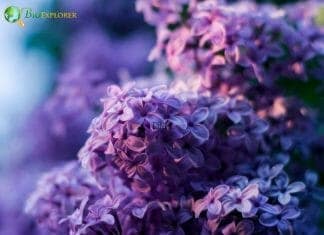
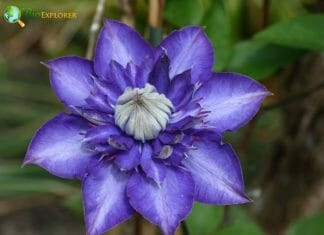
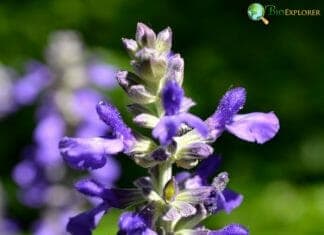
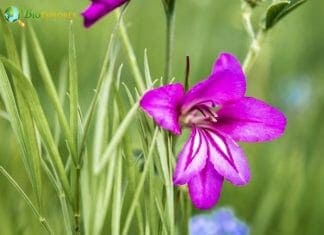
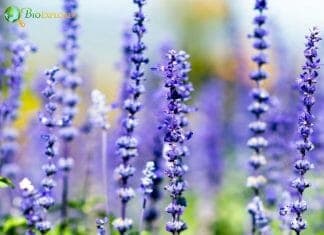
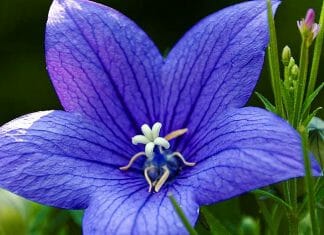
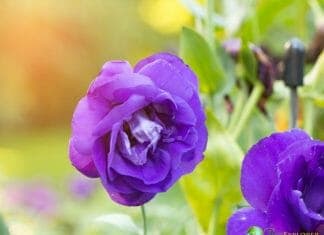
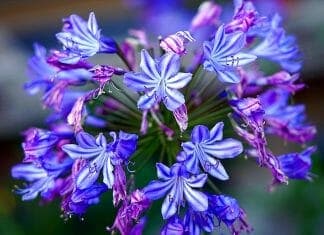
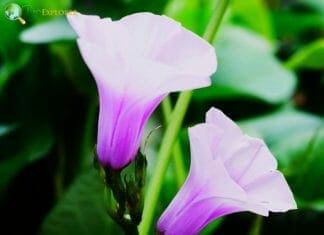
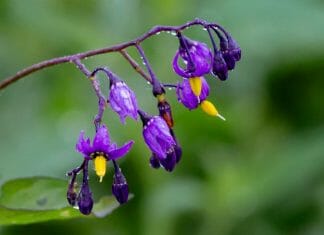
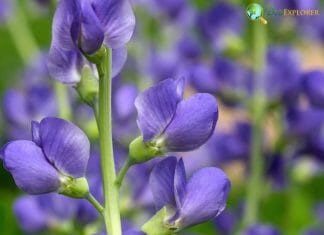
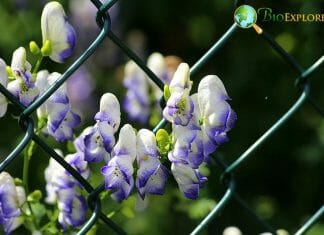
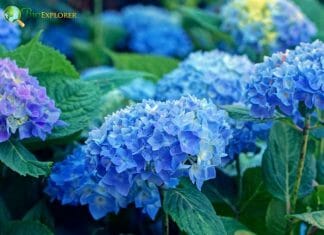
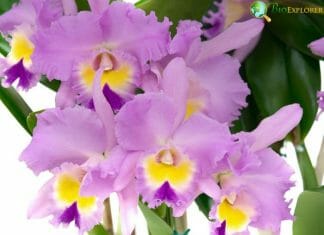
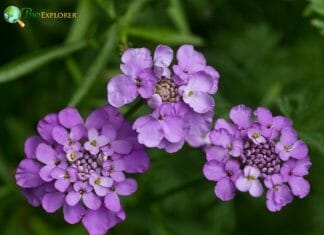
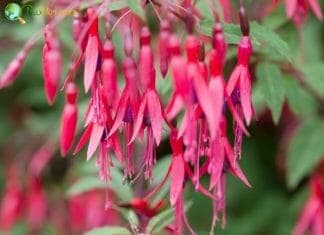
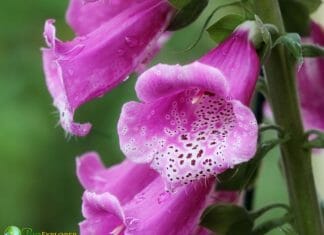
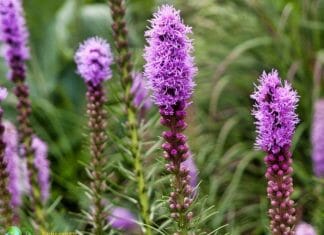
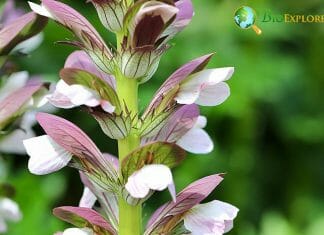
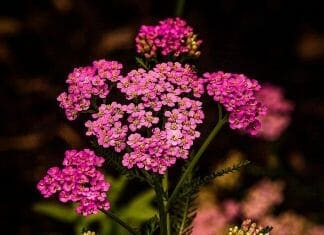
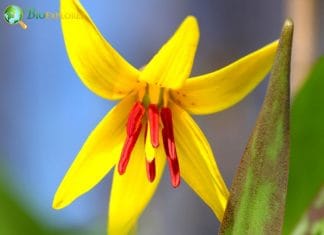
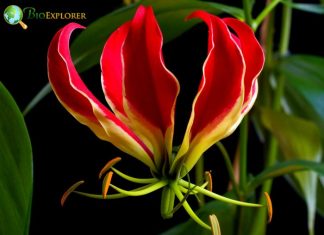
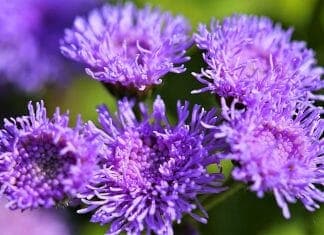
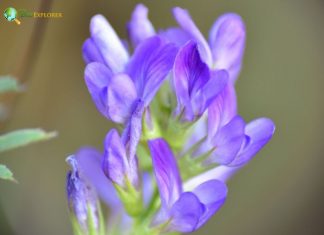
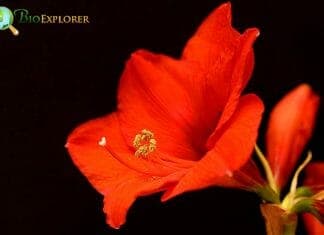
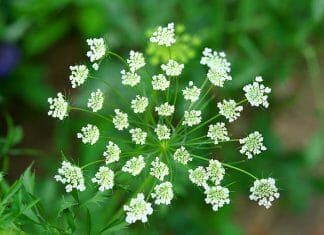
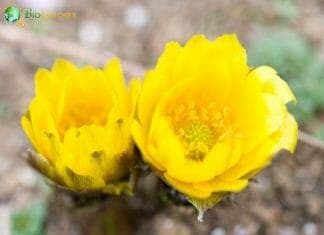
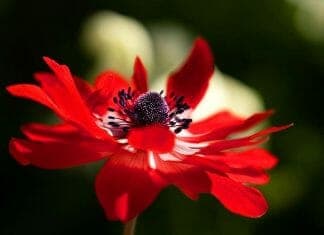
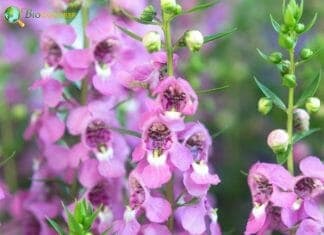
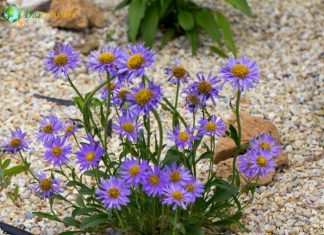
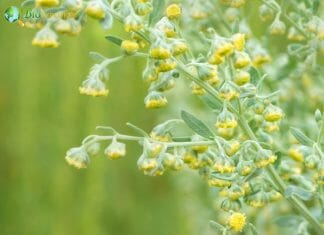
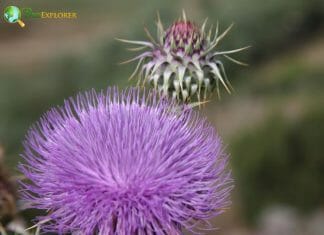
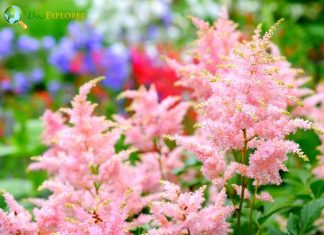
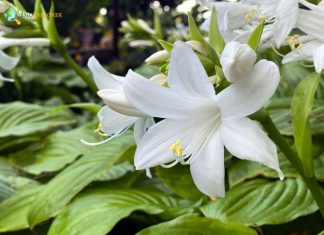
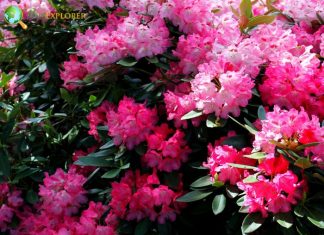
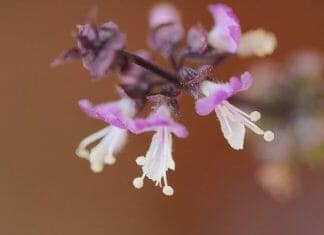
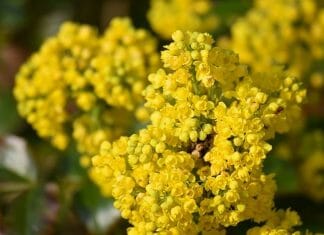
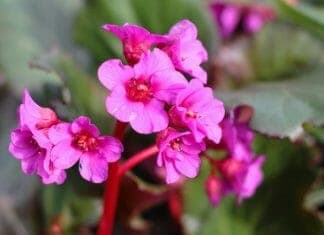
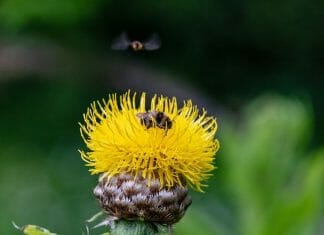
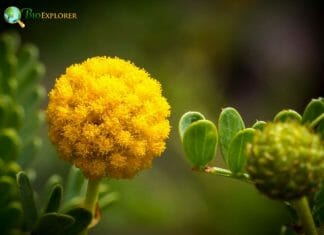
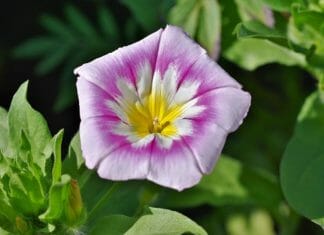
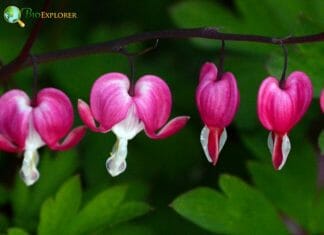
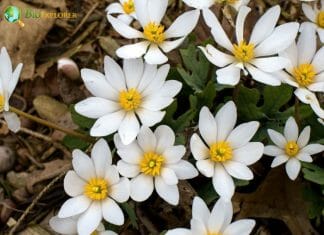
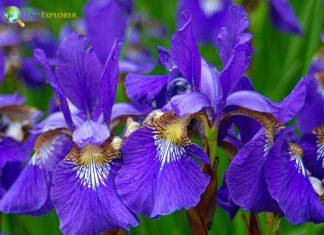
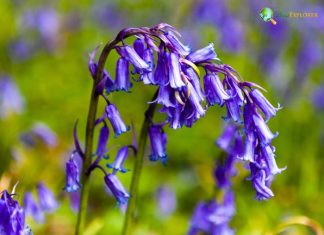
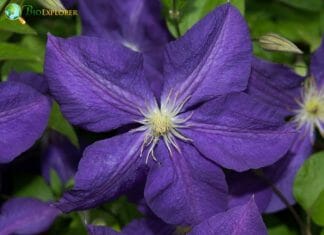
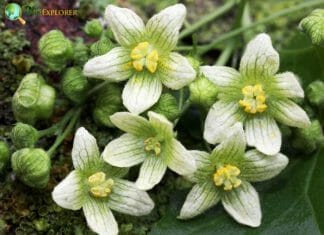
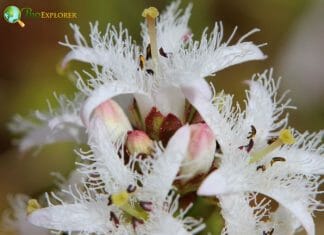

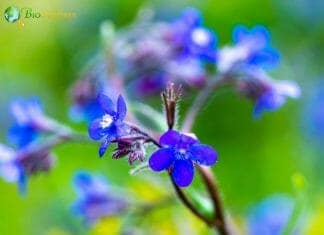
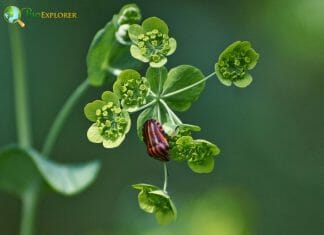
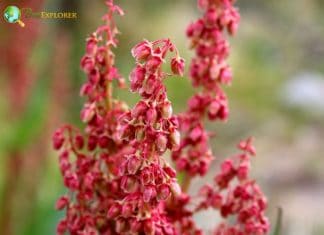
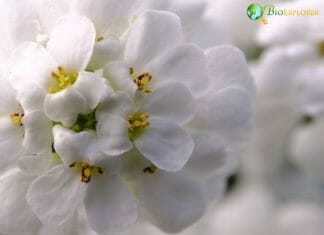
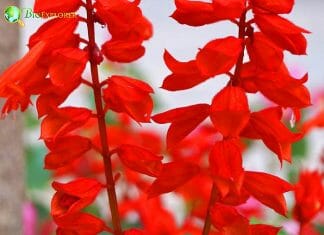
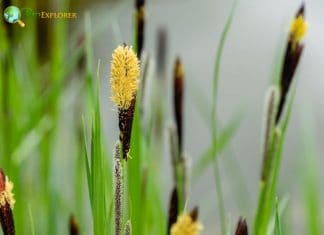
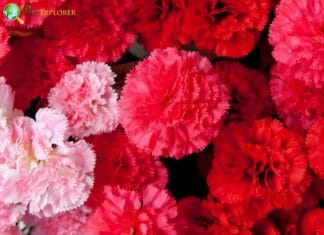
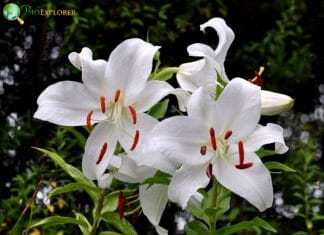
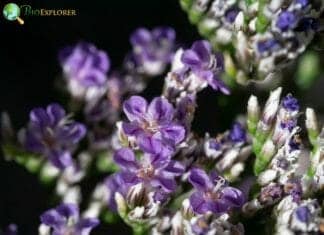
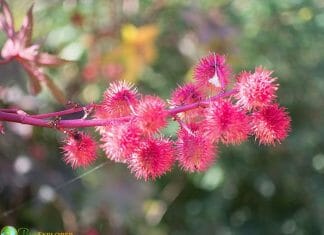
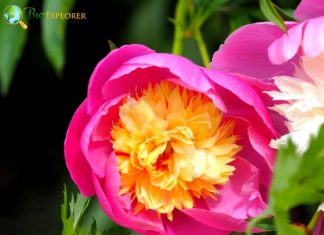
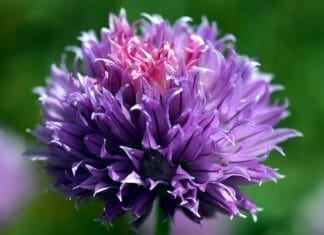

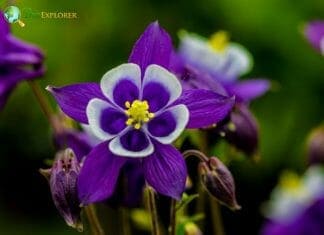
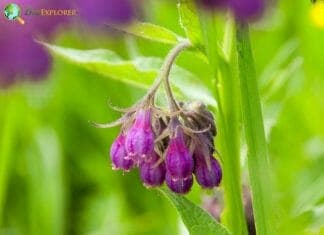
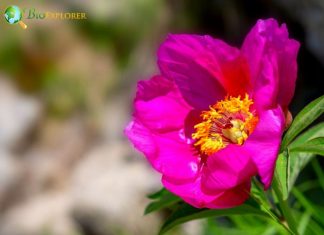
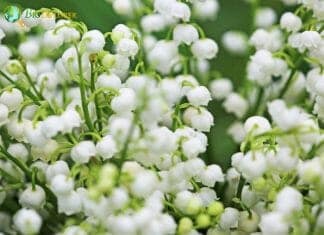
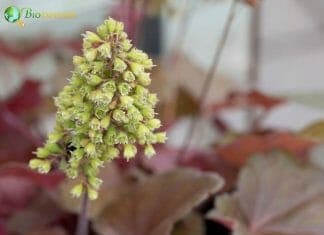
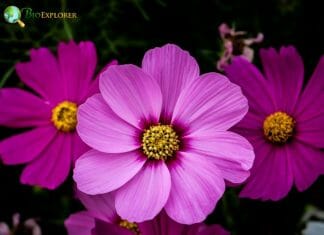
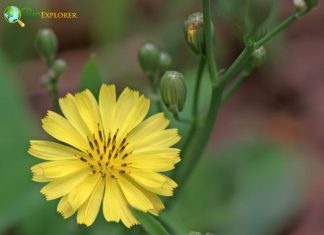
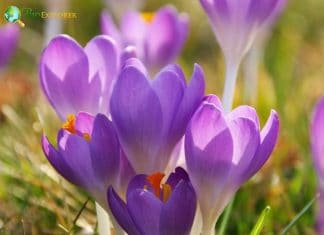
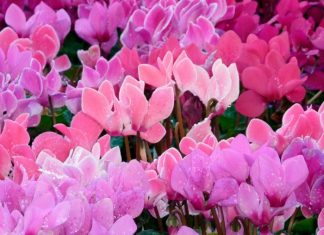
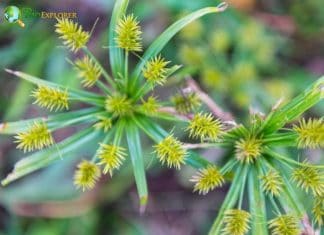
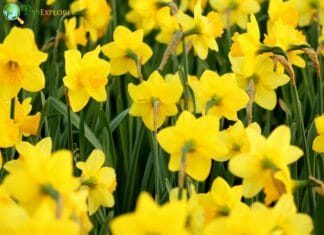
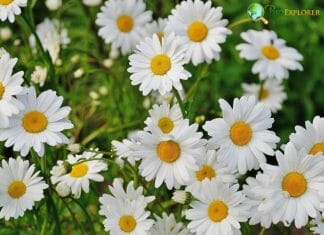
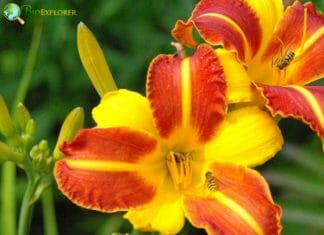
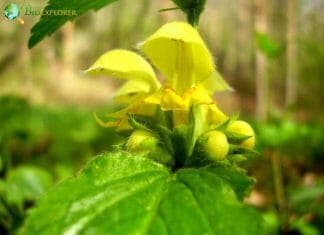
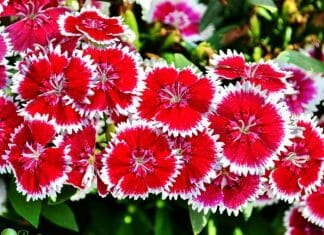
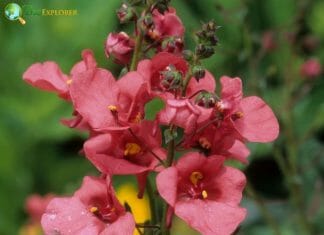
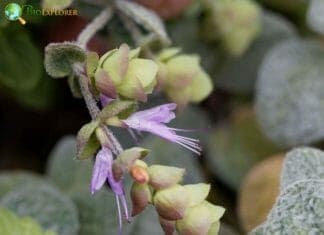
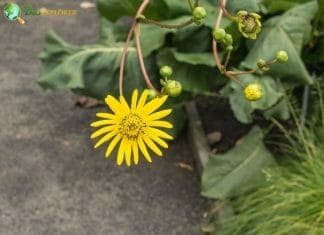
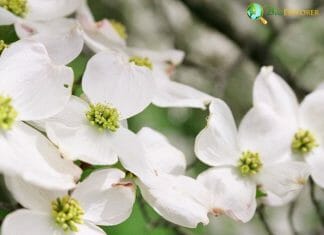
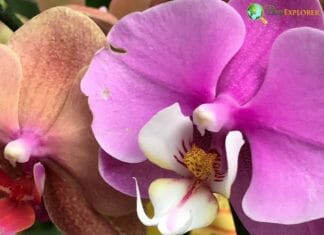
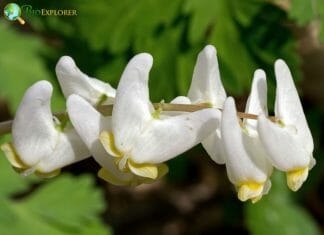
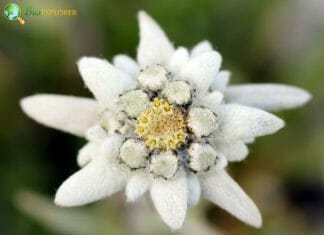
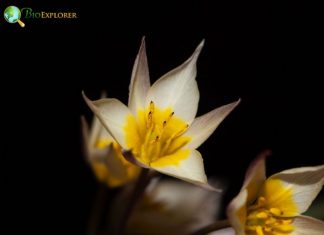
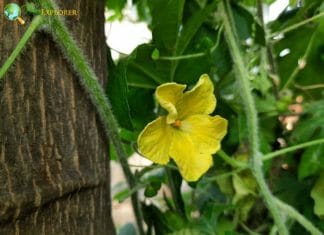
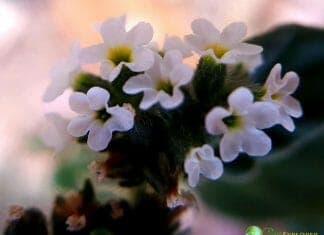
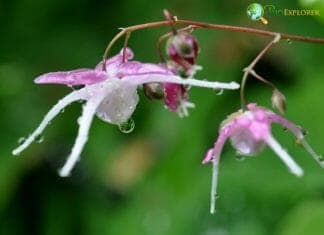
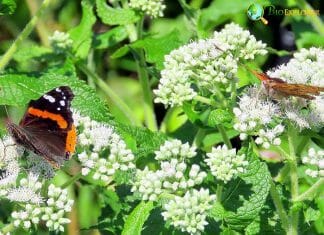
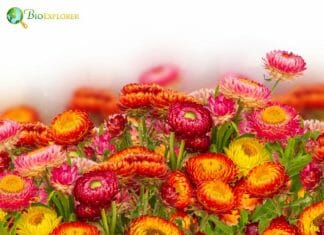
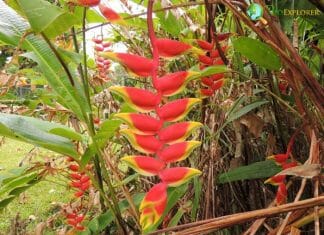
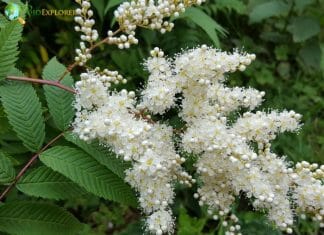
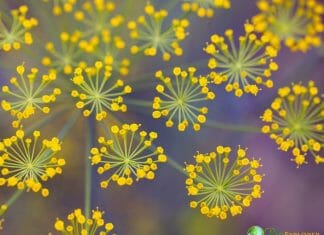
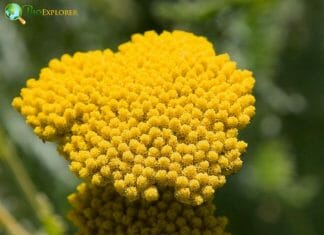
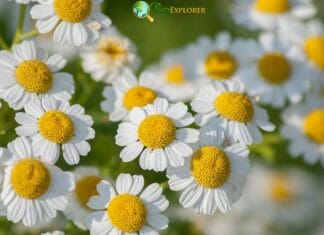
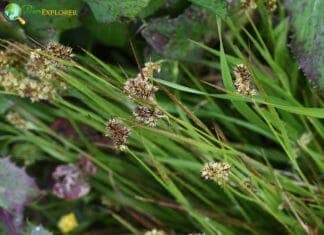
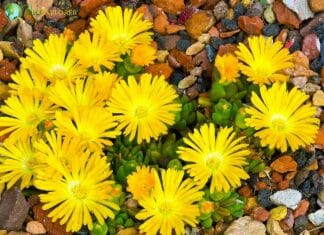
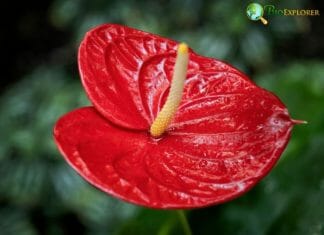
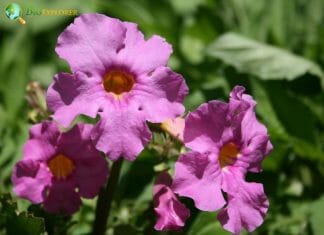
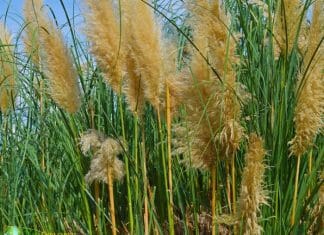
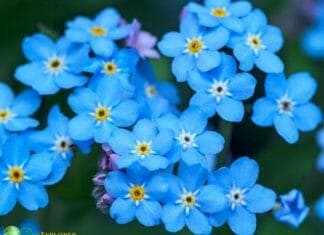
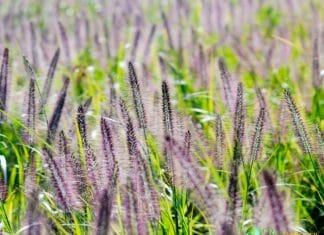
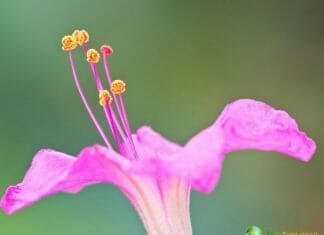
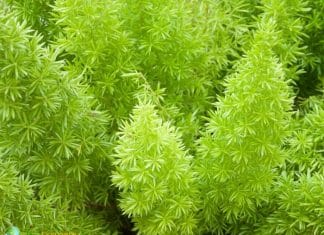
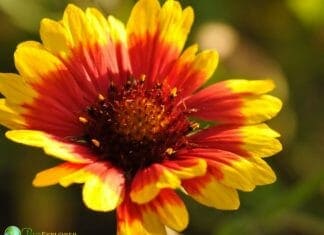
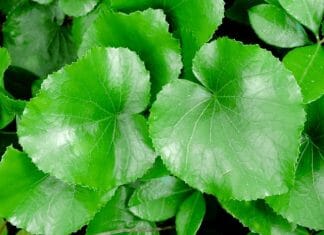
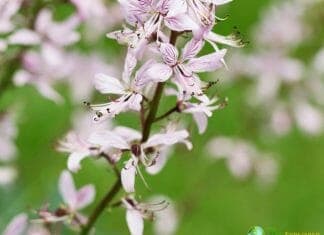
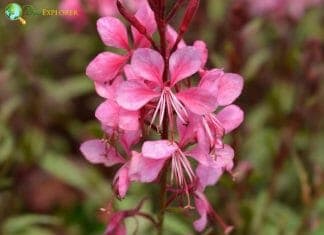
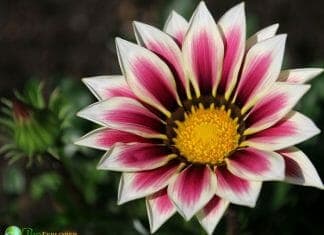
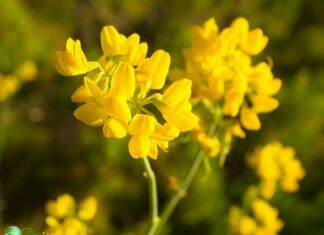
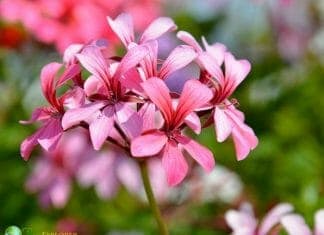
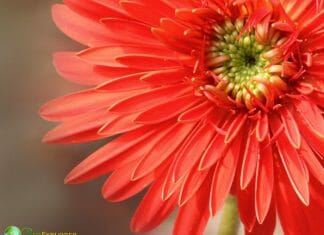
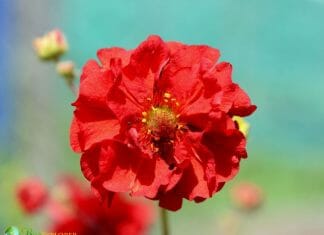
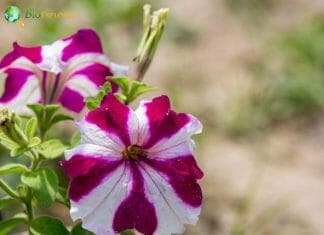
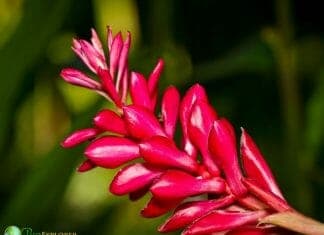
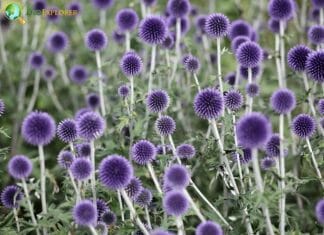
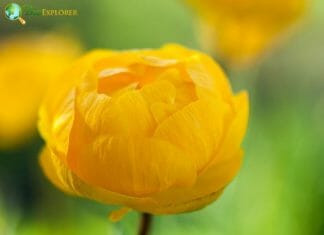
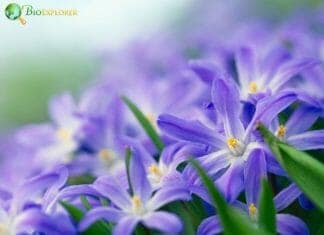
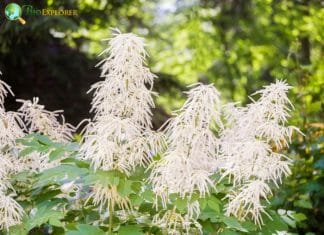
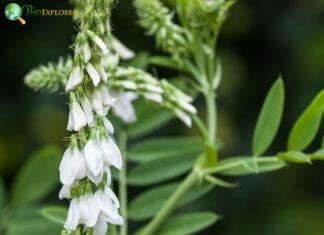
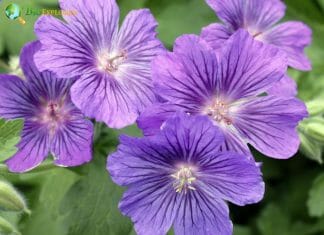
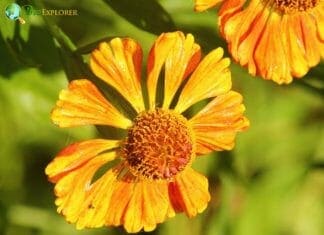
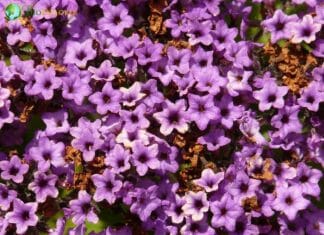
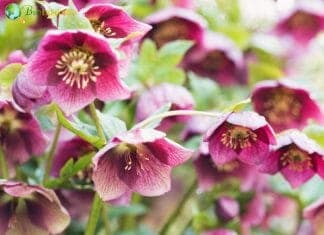
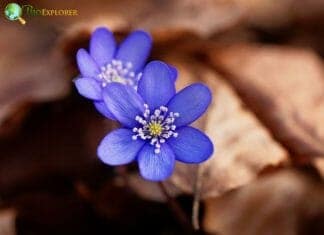
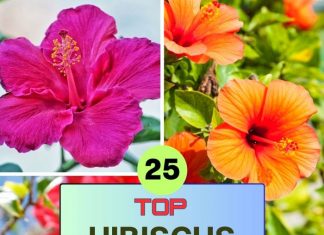
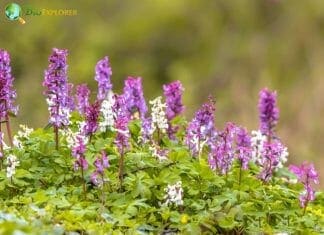
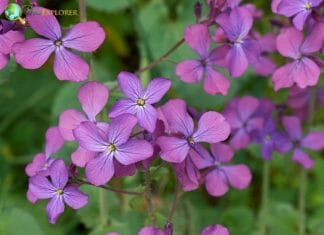
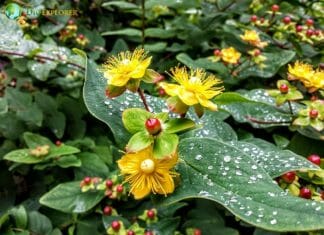
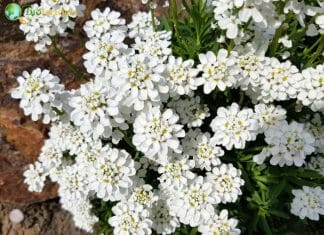
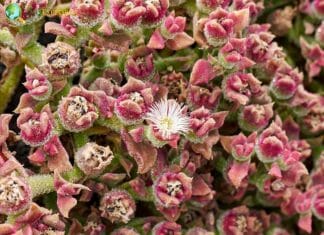
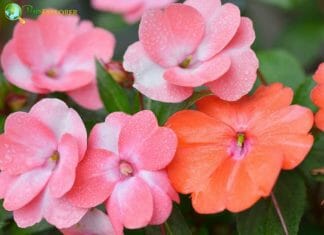
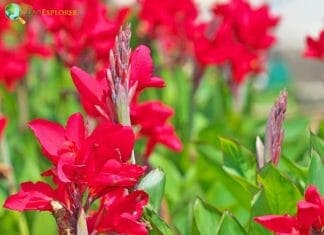
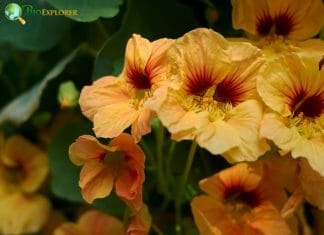
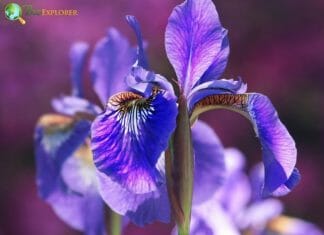
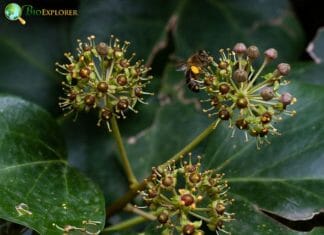
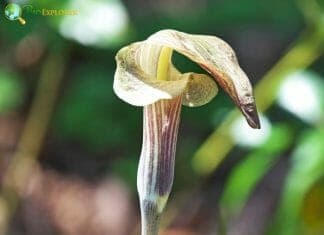
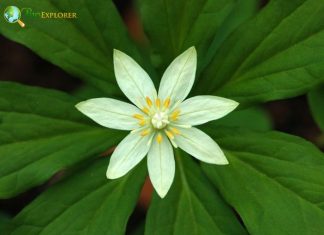
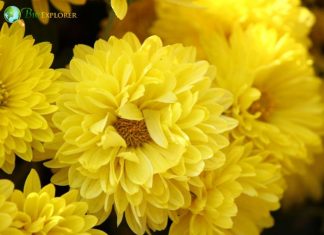
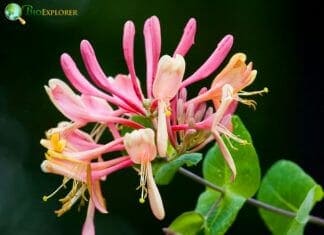
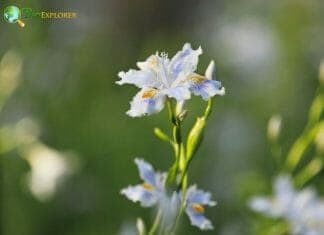
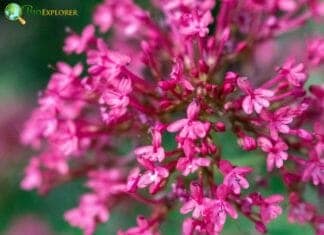
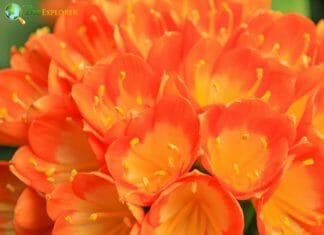
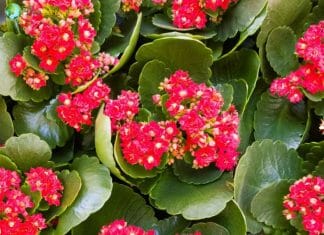
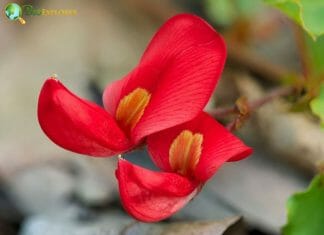
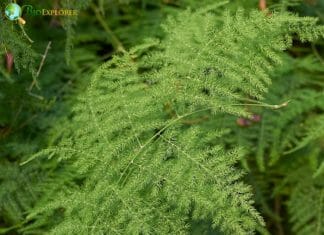
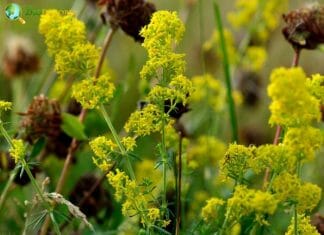
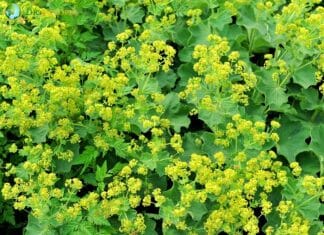
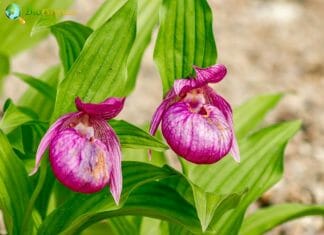
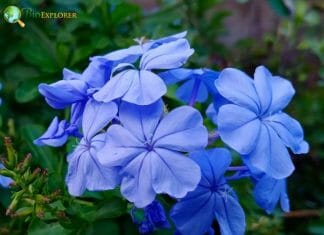
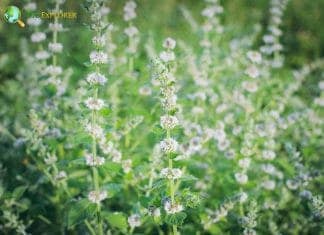
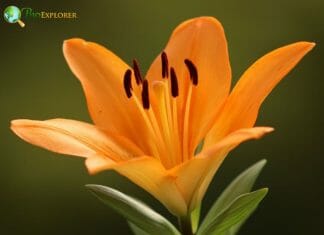
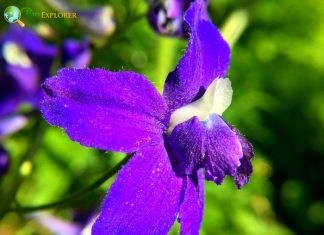
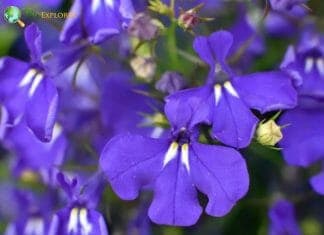
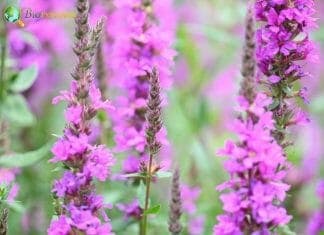

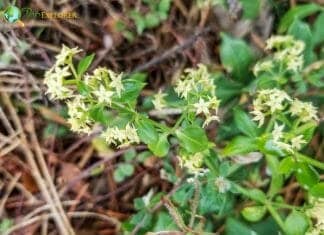
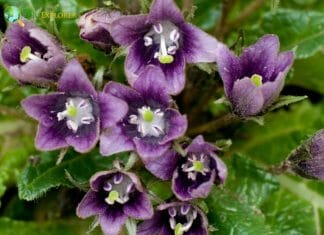
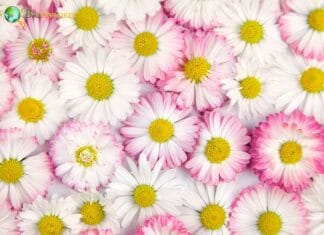
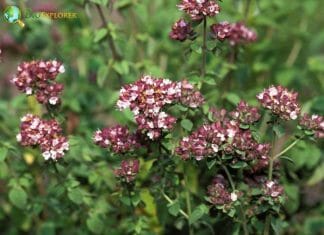
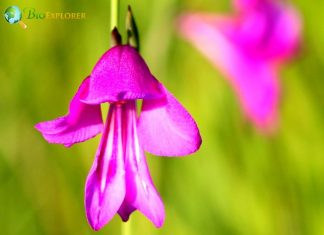
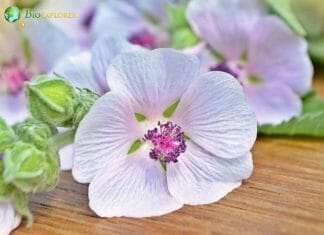
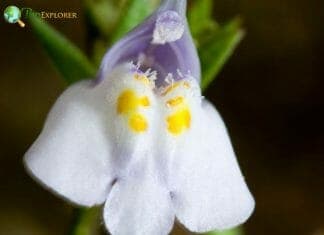
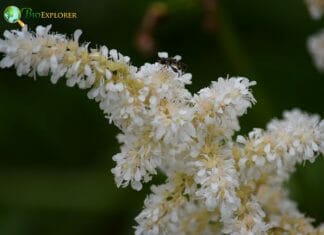
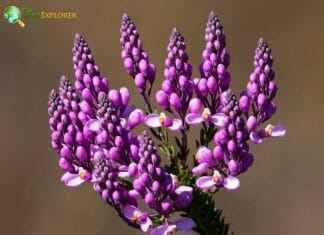
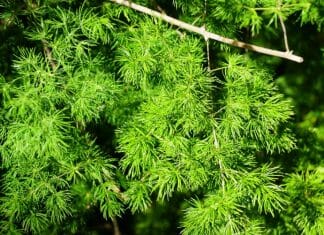
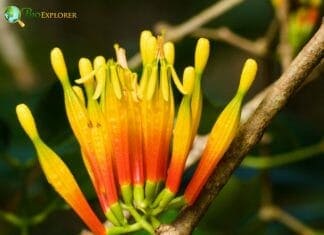
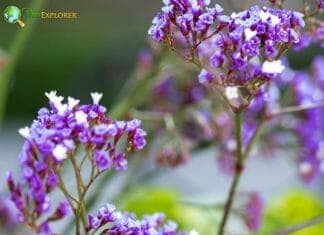
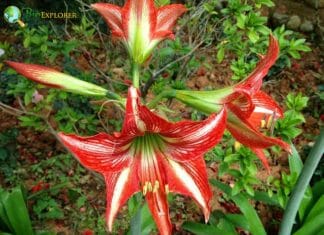
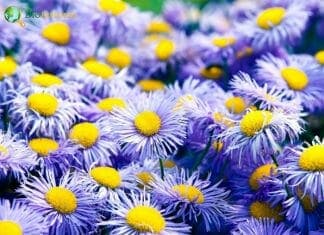
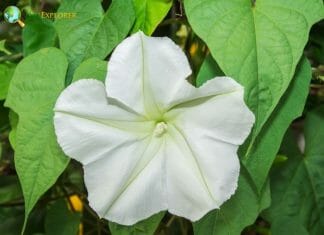
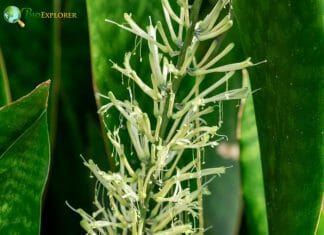
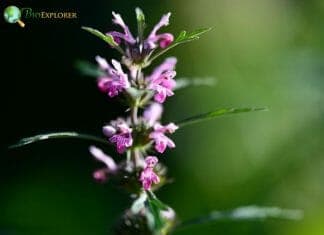
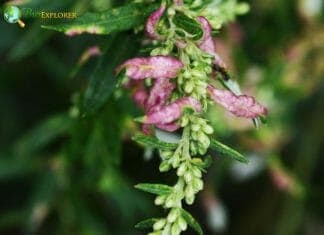
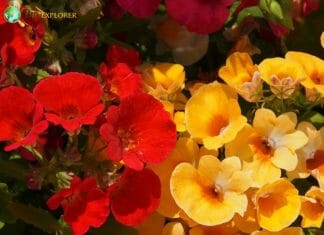
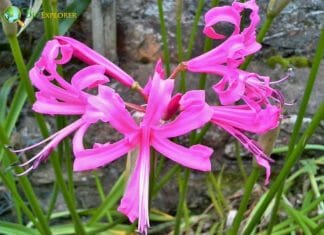
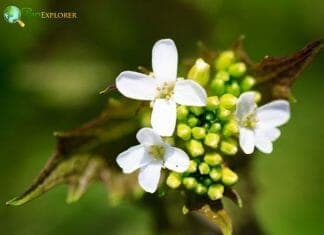
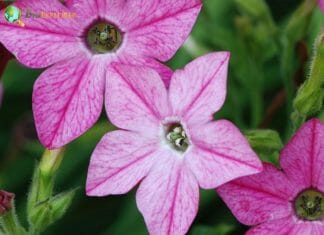
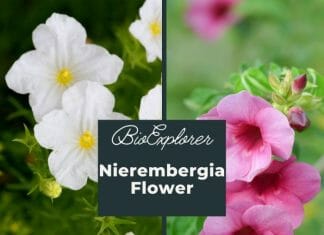
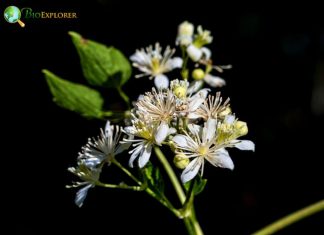
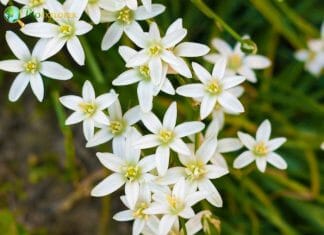
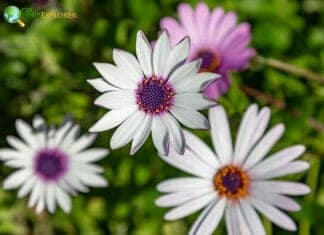
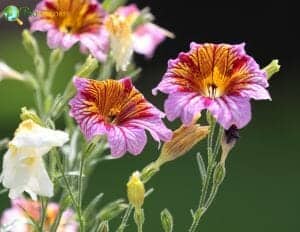
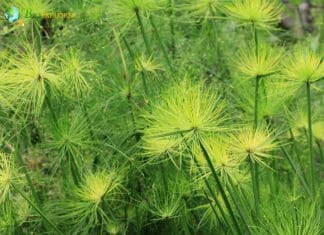
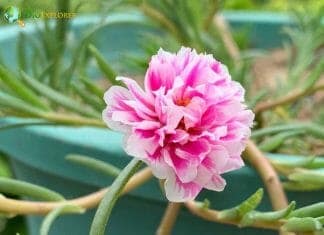
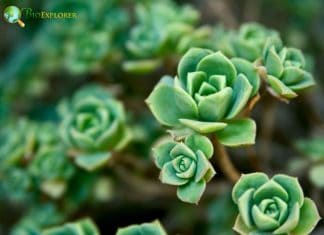
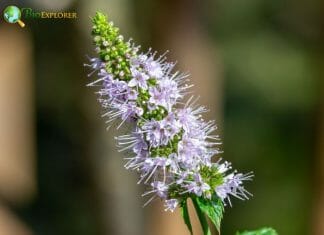
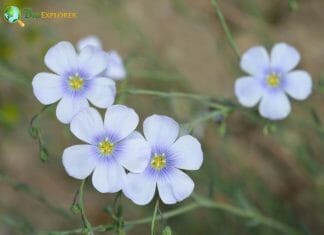
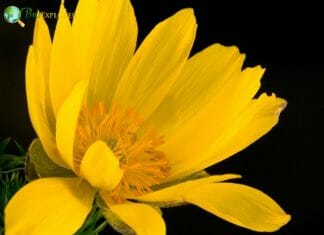
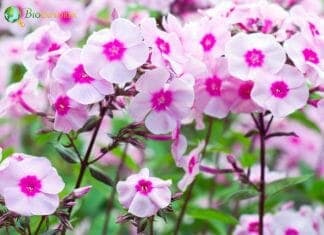
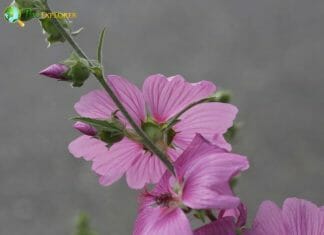
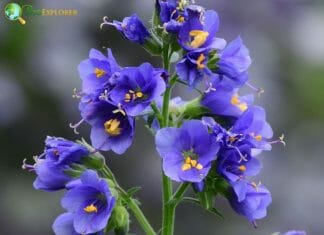
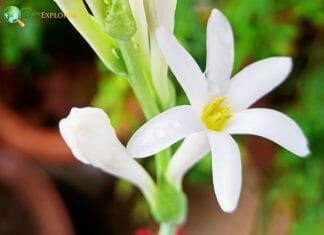
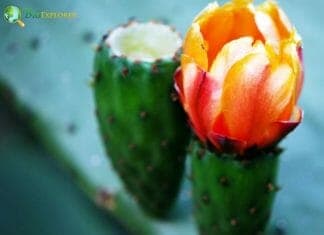
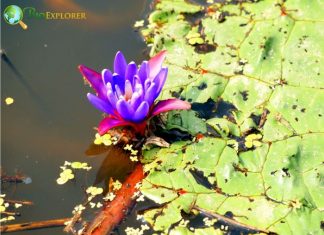
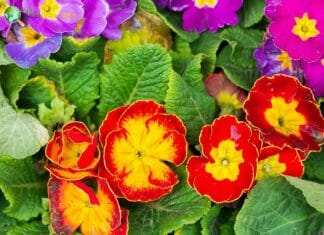
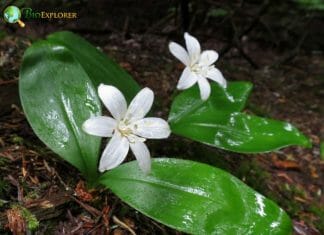
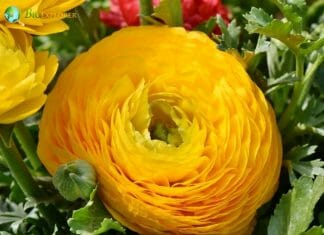
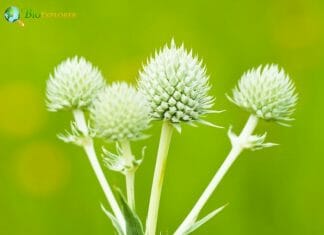
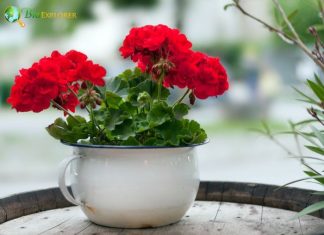
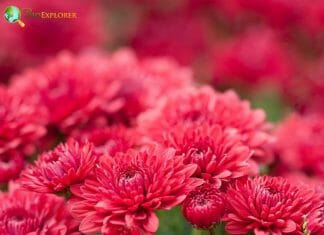

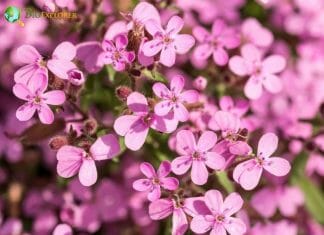
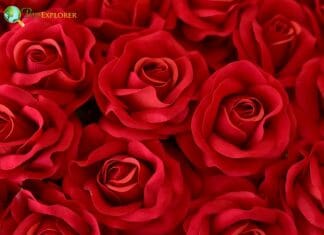
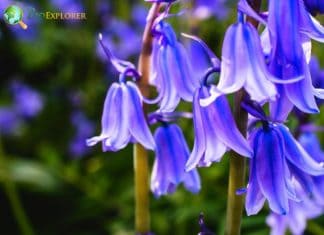
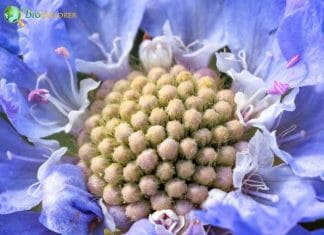
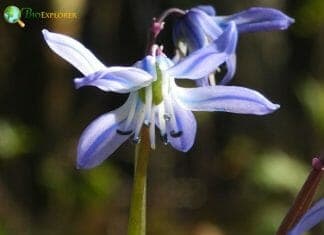
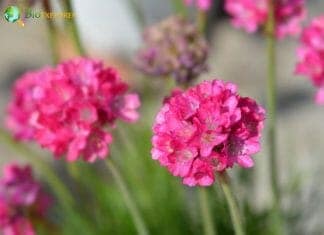
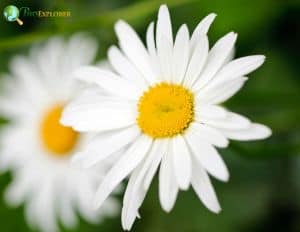
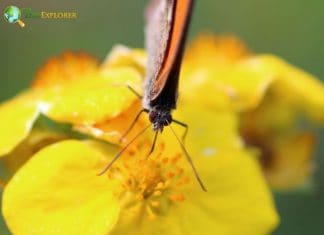
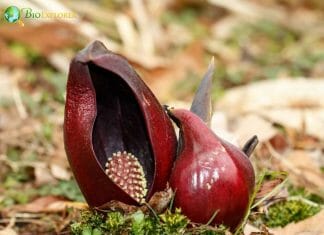
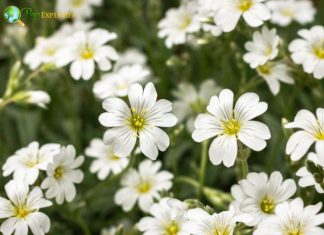
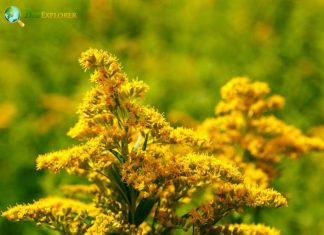
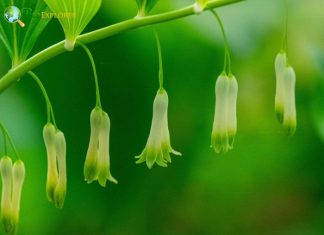
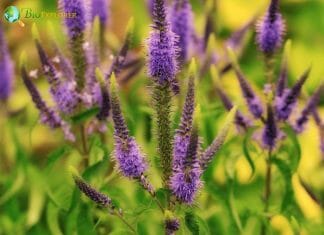
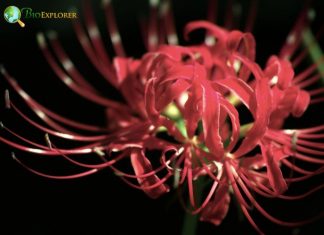
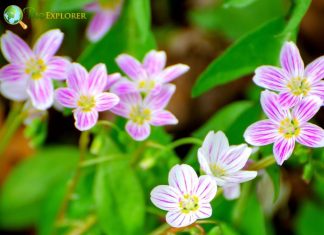
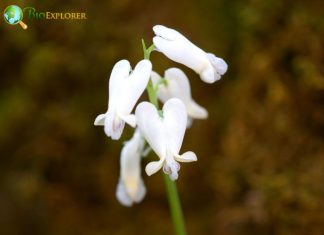
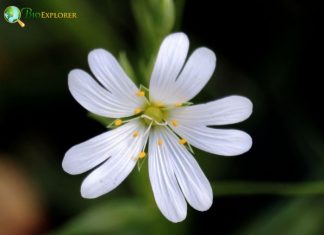
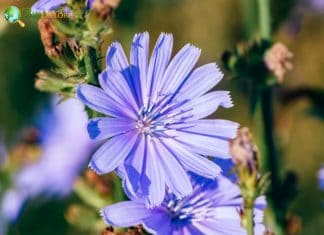
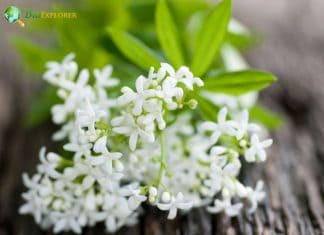
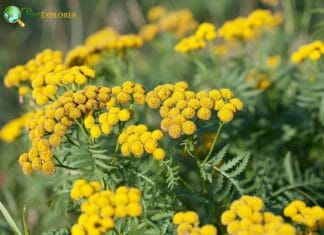
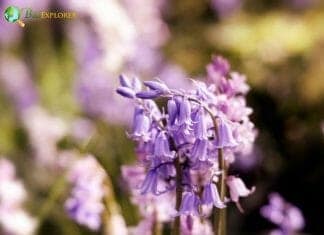
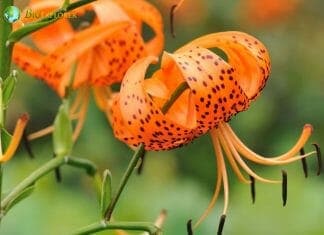
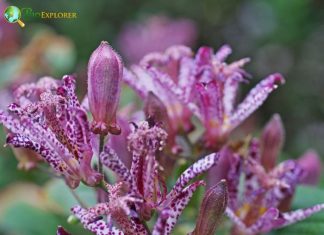
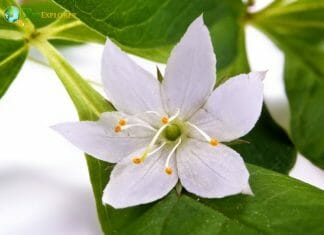
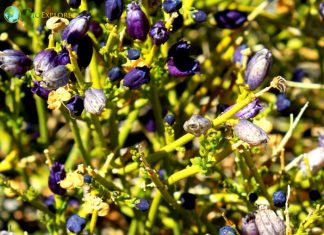
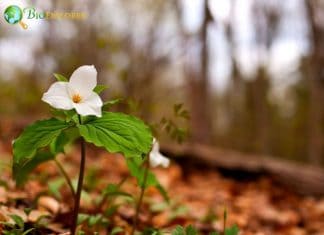
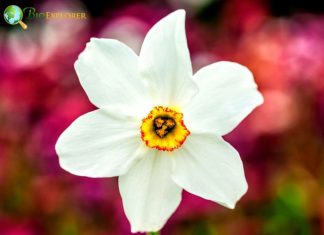
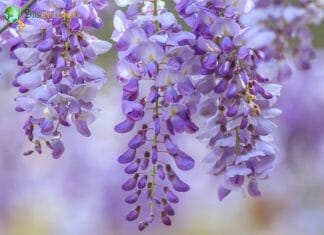
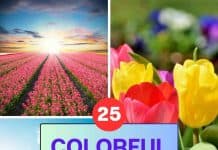

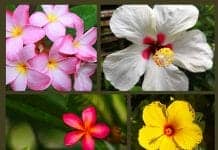

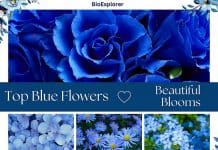
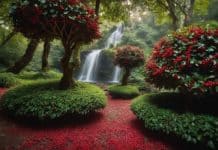









Great blog post! I love the vibrant combination of purple and green plants in a garden. It’s fascinating how these colors can add depth and visual interest to any space. The list of 22 plants is diverse and provides a wide range of options for different gardening preferences. Personally, I’m excited to try growing Purple Majesty millet and Persian shield. Thanks for sharing these suggestions; it’s inspired me to create a stunning purple and green garden of my own!
thank you for sharing!